3-day trip discovering Japan’s Inland Sea
As someone who has only lived on islands, traveling along the coast brings to mind beaches, nice weather, and a general slower pace of life. The Setouchi Region checks all of those boxes, but where and what exactly is Setouchi?
Simply put, the Setouchi Region is a wide and expansive area surrounding the Seto Inland Sea, and consists of hundreds of islands.
The last time I came to the Setouchi Region, I spent three days exploring the seaside towns of Hiroshima. It was clear that there was much more to see and do in the region, and this time, I spent three days in the eastern side of Setouchi, specifically in Himeji, Shodoshima and Ogijima. Details about the nitty gritty transport details can be found in the access section, which includes details about the Setouchi Area Pass.
Day 1: Himeji
My trip started in Shin-Osaka Station where I took the bullet train to Himeji. The city has two major sightseeing attractions: Himeji Castle, a national treasure and UNESCO World Heritage Site, and Shoshazan Engyoji, a mountain temple complex. The former is a 20 minute walk from Himeji Station, while the latter is about 30 minutes by bus from the station or the castle. Interestingly both sites are movie filming locations thanks to their historical and preserved status.
I visited Himeji Castle first. There are a number of castles in Japan, many reconstructed ones and only twelve whose main keeps have survived fires, wars and destruction since the feudal era. Himeji Castle is Japan's best surviving castle from the feudal period, and one of the most impressive ones. It is also known as white heron castle for its elegant, white appearance like a bird spreading its wings.
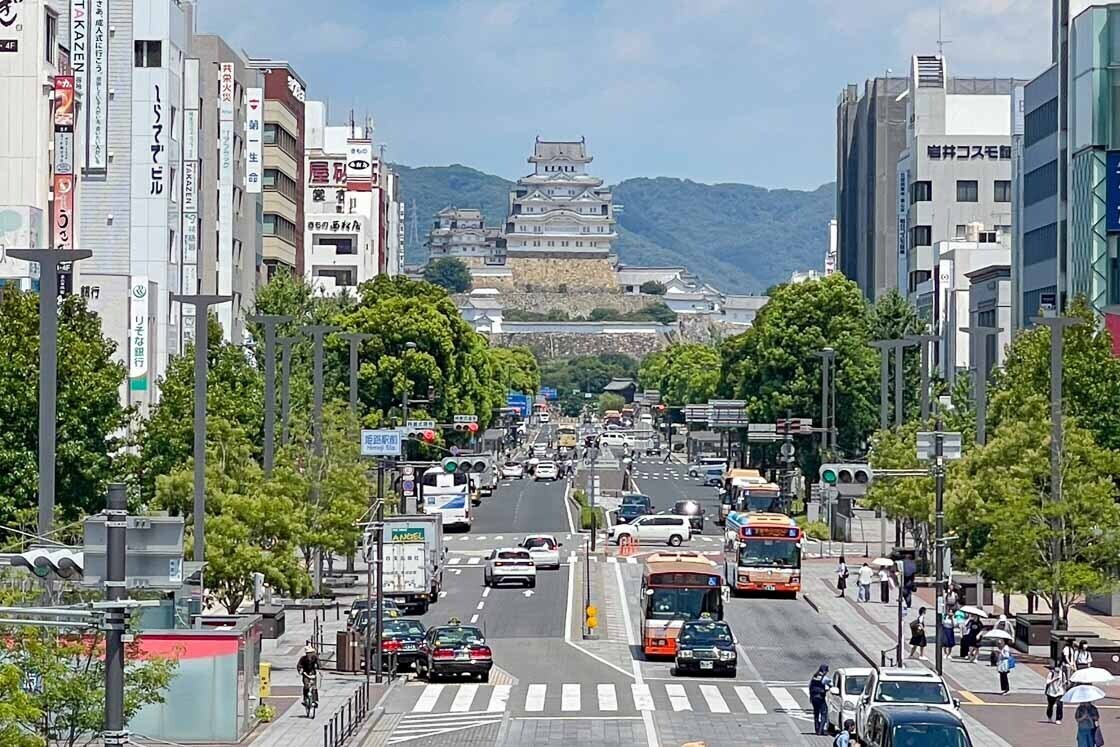
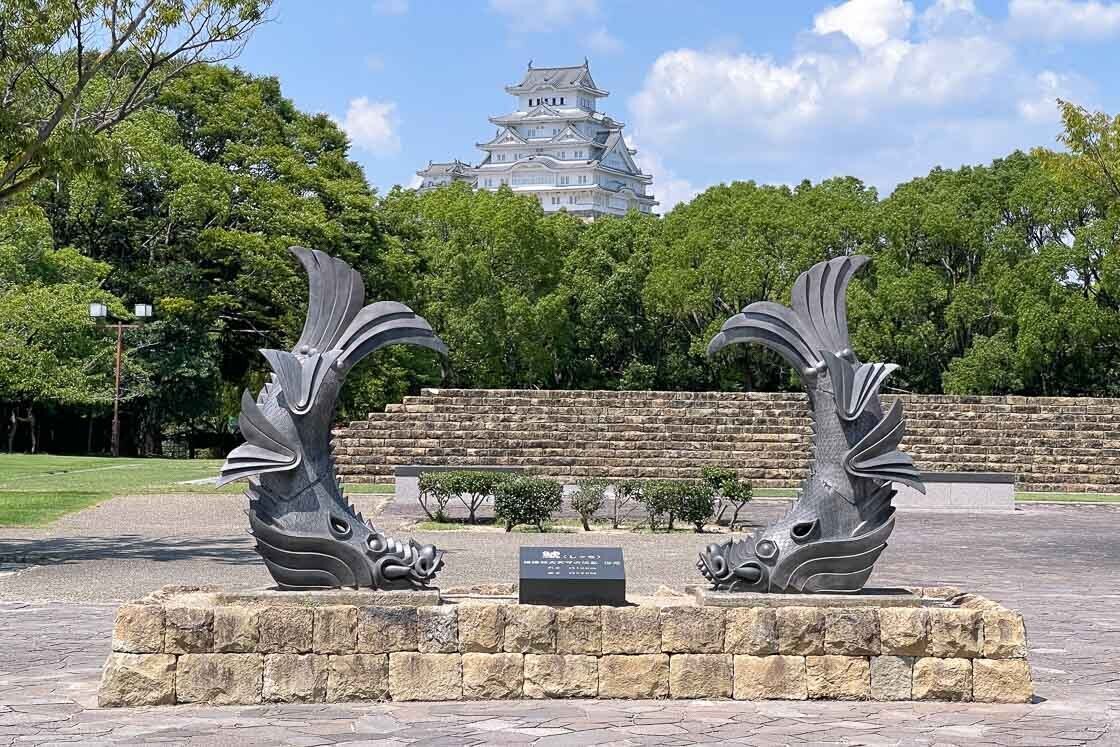
Most Japanese castles one have just a single, standalone main keep, like the nearby Osaka Castle. However, in the case of Himeji Castle, the main keep complex consists of one large tower and three smaller towers. In addition to these beautiful towers, the secondary walls of the castle complex still remain. It takes about 1.5 to 2 hours to see everything at a leisurely pace.
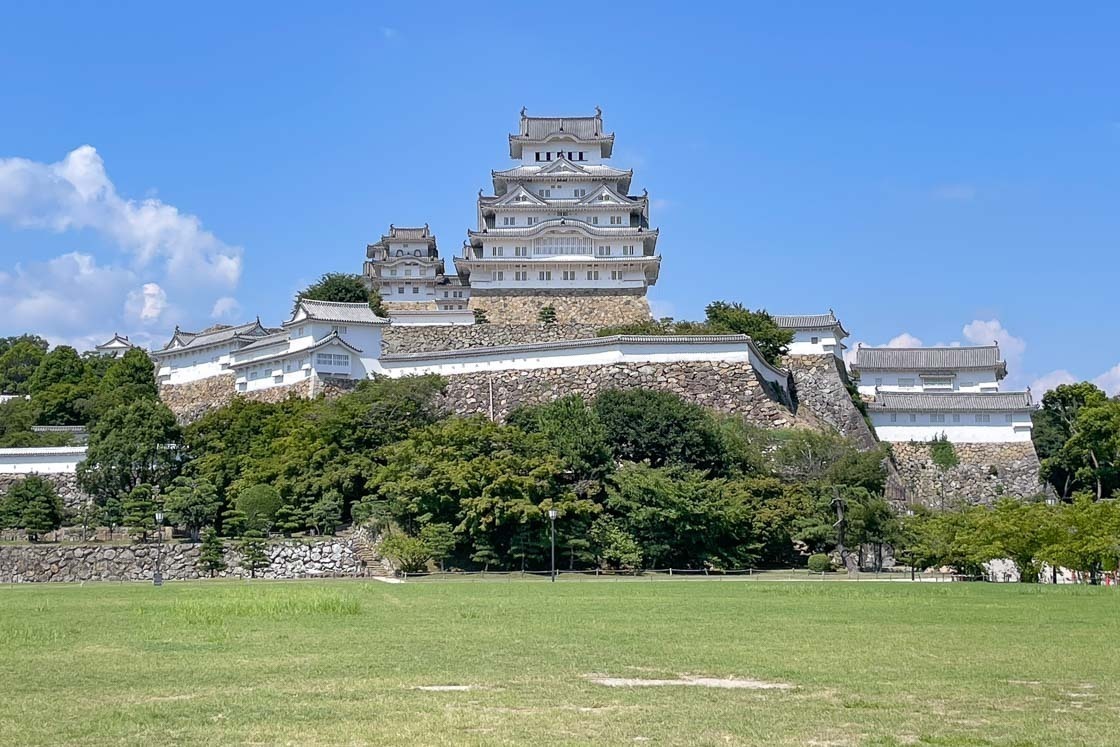
Inside the large main keep, visitors can see the sturdy foundation beams as well as walk the same steep and narrow stairs that samurai used back in the day. Some weapons are also displayed in the large main keep. Other historical castle furnishings are displayed in the adjacent smaller main towers.
When it comes to Japanese castles, the main keeps were meant to be symbols of power and the last line of defence. As such, it should be noted though that the castle keeps are not where the lords lived. Instead, their living quarters were typically located in separate palace buildings near the main keep.
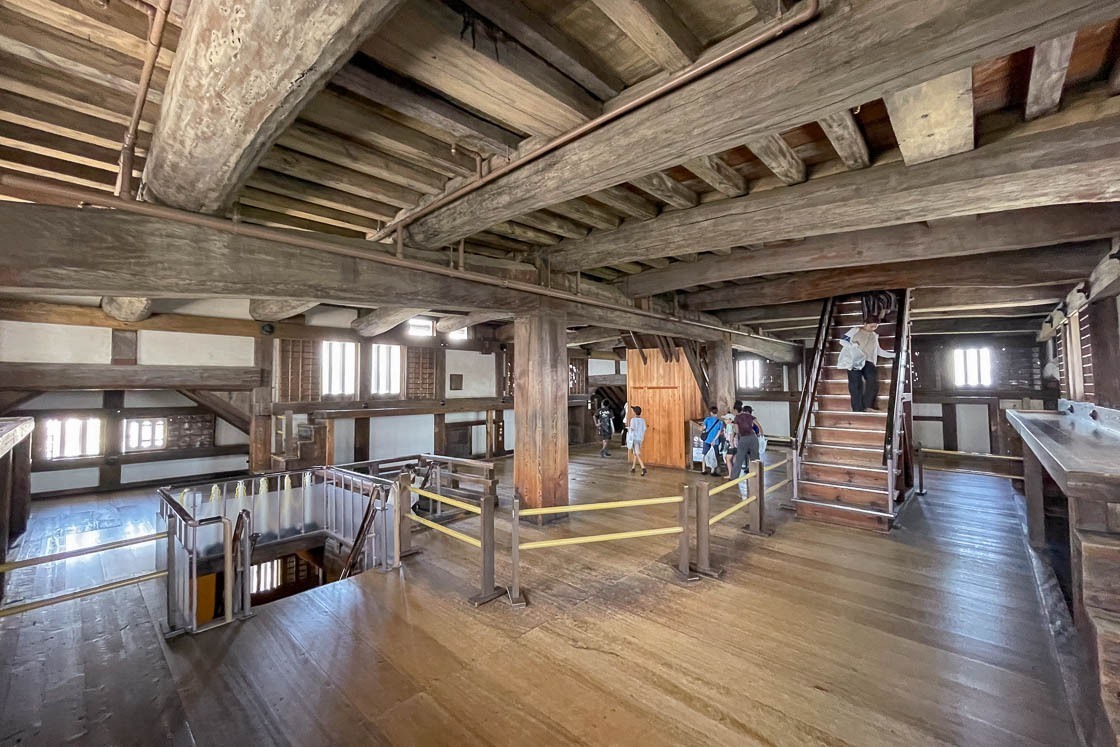
Nothing remains to be seen of Himeji's castle palace save the stone walls, but a turret named Kesho Yagura or Dressing Tower still survives and can be entered. This tower with its long corridor was built for the princess of the castle and her ladies-in-waiting, and visitors can see displays related to the princess and some rooms.
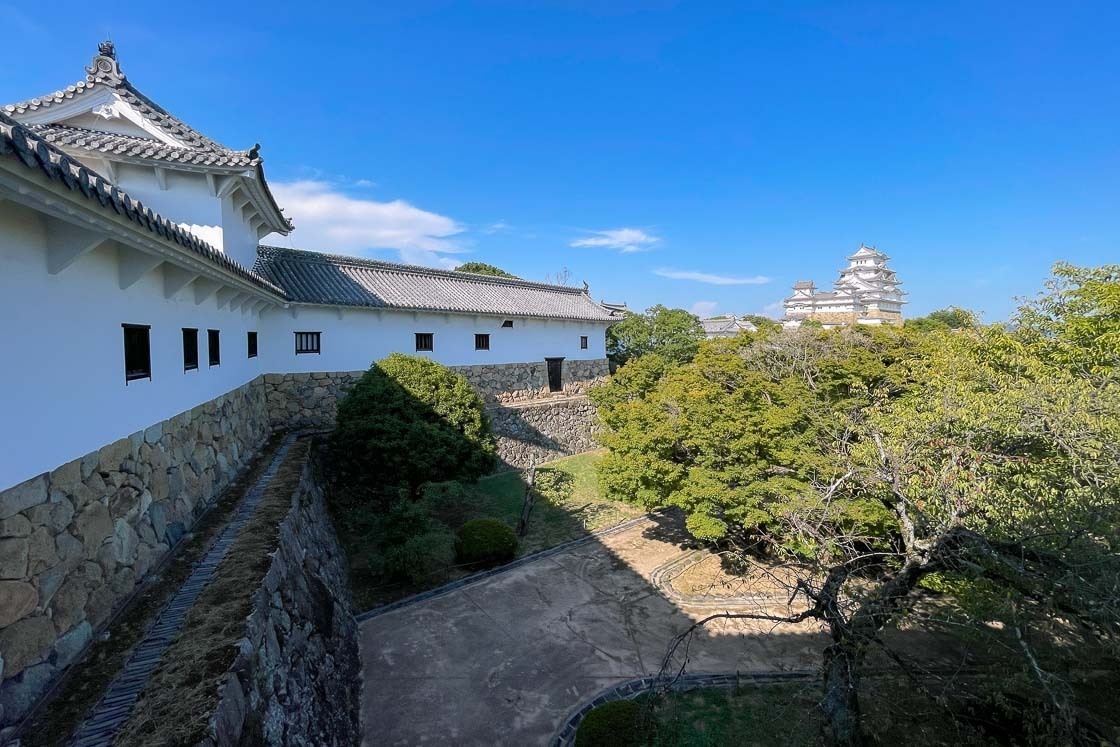
After spending a couple of hours exploring the castle grounds, I moved on to Shoshazan Engyoji. The Buddhist temple Engyoji was built on Mount Shosha or Shoshazan. The most common way to get to the temple is by ropeway; the alternative is hiking about 60 minutes from the lower ropeway station.
Engyoji Temple has a history of over a thousand years, and has been drawing visitors and pilgrims alike since long. In fact, Engyoji is part of the Saigoku Kannon Pilgrimage that covers 33 Buddhist temples in the region.
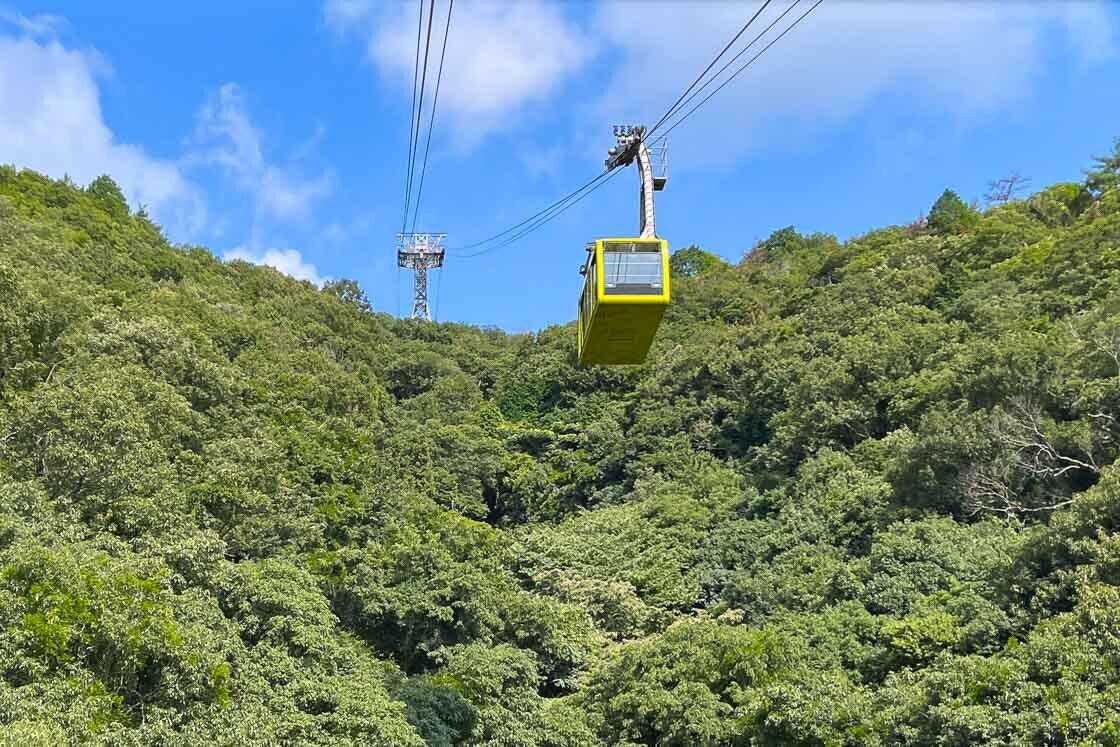
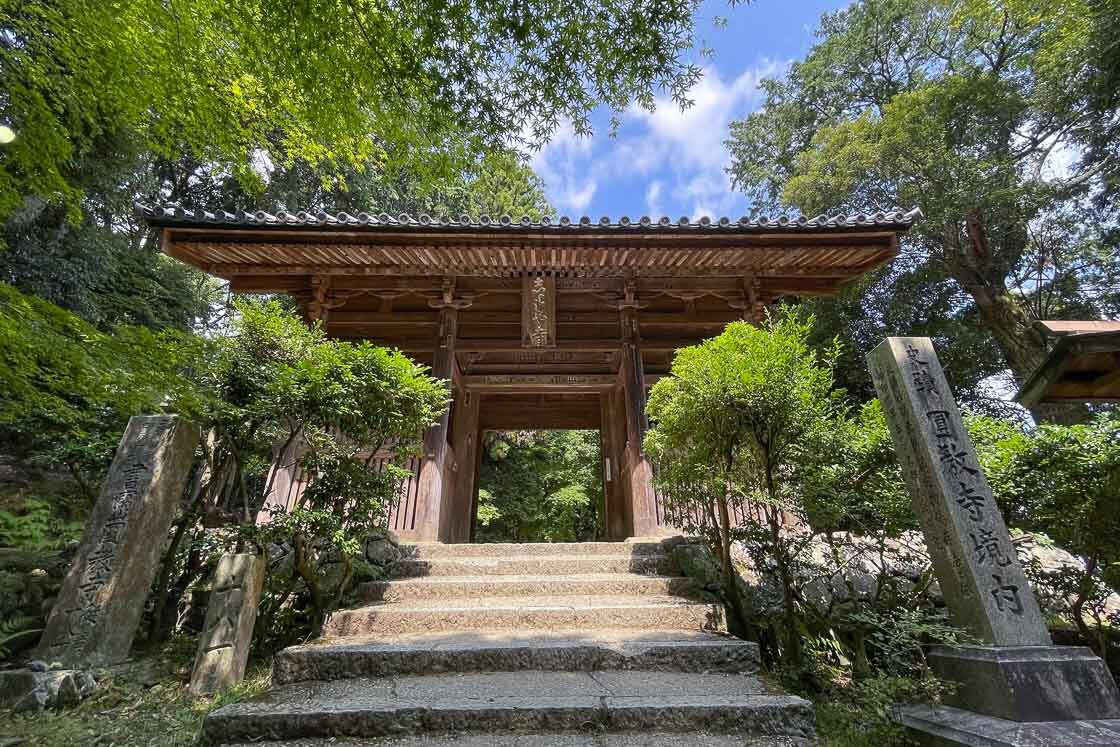
The main worship hall at Engyoji is the Maniden. The original building stood for almost a thousand years before it was destroyed in a fire, and the current building is a reconstruction from 1933. The hall is built on a cliffside, and it is supported by a lattice structure.
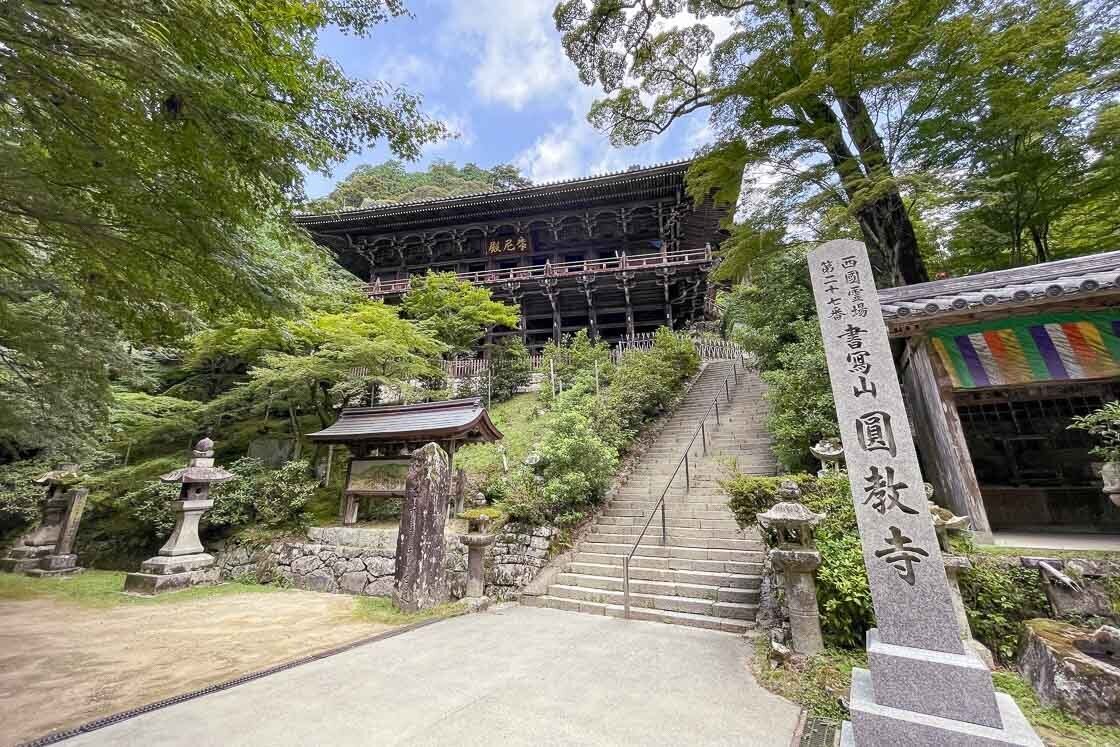
About five minutes on foot from the Maniden stands another set of three iconic buildings at Engyoji. Collectively known as the Mitsu-no-do or the three halls, these massive buildings were where the monks used to live and train. Buddhist statues and historical artifacts are displayed in one building, which can be entered. The other two can only be observed from the outside.
It takes about two hours to see everything at Engyoji at a leisurely pace; more time should be allocated if hiking instead of taking the ropeway up and down the mountain.
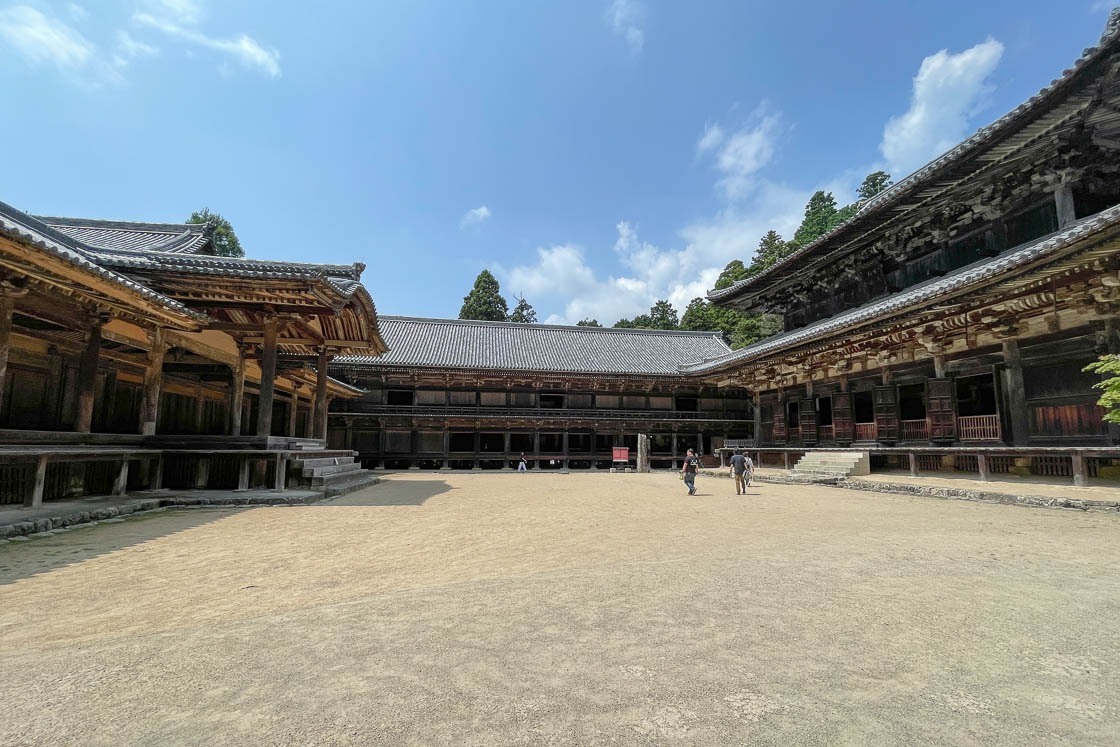
I had a fulfilling day in Himeji, and it was time to continue west to Okayama, where I stayed the night. Those who are interested in extending their stay in Okayama, Cassie's last trip can offer some inspiration for what to do in and around Okayama.
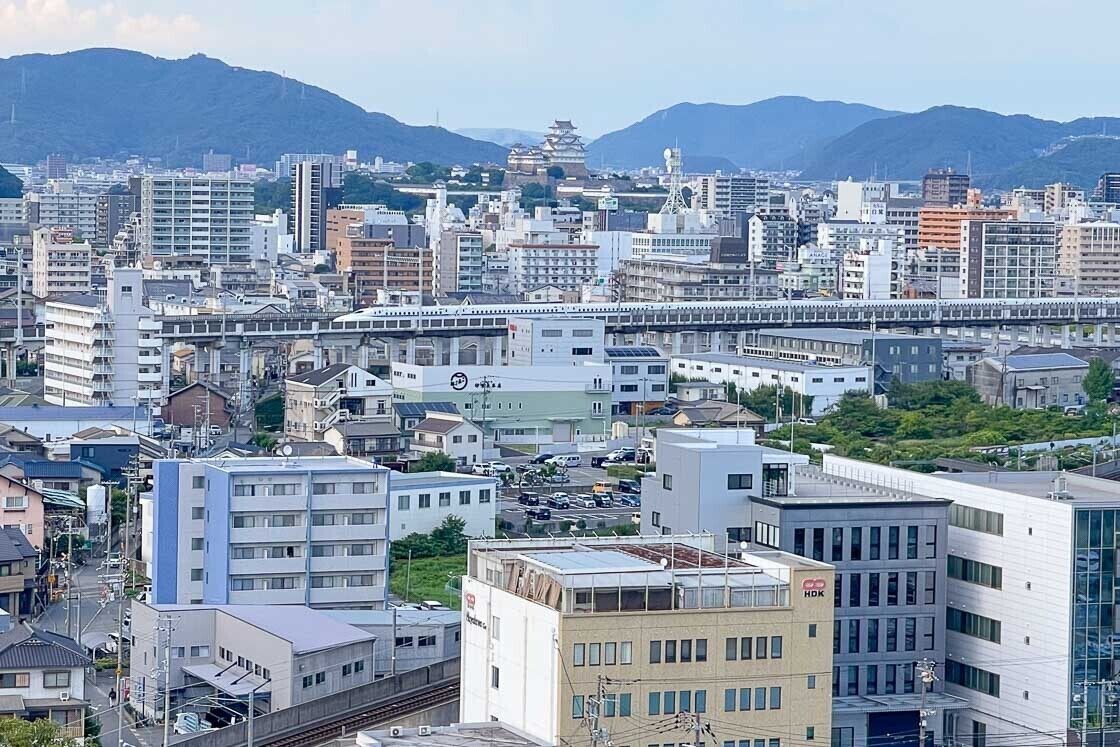
Day 2: Shodoshima
Today I woke up bright and early to catch the local bus from Okayama Station to the port, where I took a ferry to Shodoshima, the second largest island in the Seto Inland Sea. And given its size, it may be surprising to some that Shodoshima is not connected to the main island of Japan in the north nor to the island of Shikoku in the south by bridges. In fact, there are no airports on the island either, which means that taking a ferry is the only way to get to Shodoshima.
I was particularly excited, because not only am I a train fan, I also enjoy taking ferries. This approximately hour long ferry ride between Okayama and Shodoshima was just about enough time for me to look around the ferry, see the nice sea views and sit down to relax. It is possible to explore Shodoshima by public bus, but I decided to go with a rental car to maximise my limited time on the island.
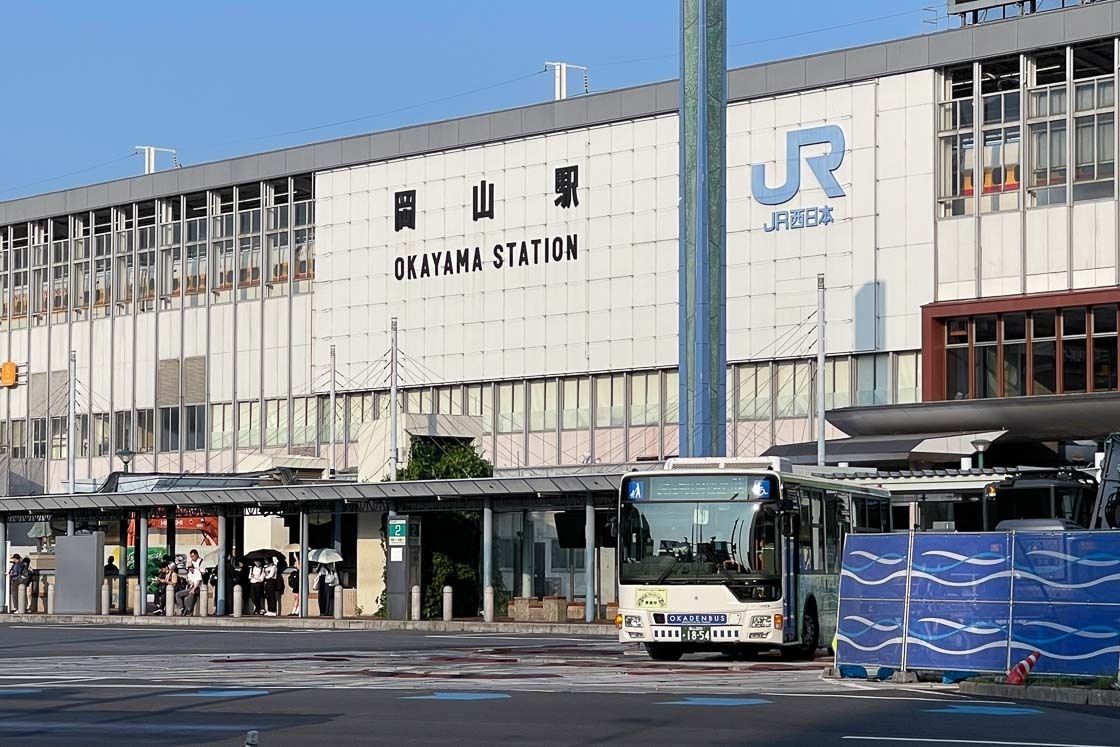
Shodoshima's climate is similar to the Mediterranean, which makes it good for growing olives. The first olive tree was planted over a century ago in 1908 in an area that is now the Olive Park, my first stop on the island. The success of harvesting olives from the first olive tree made Shodoshima the birthplace of olive growing in Japan, and today, the island is the top producer of olives in the country.
Olive Park, as its name suggests, is a spacious park containing approximately 2000 olive trees of various varieties. It was my first time being in an olive grove, and it was a new experience for me to walk through the rows of trees, of which many had olives.
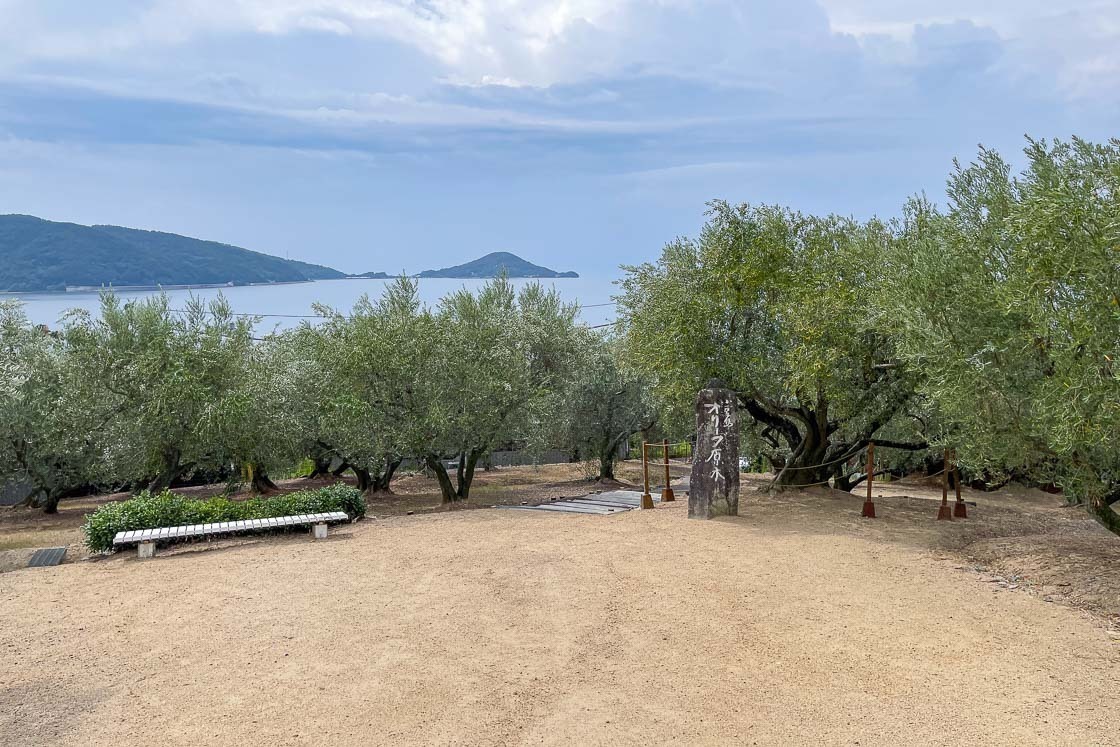
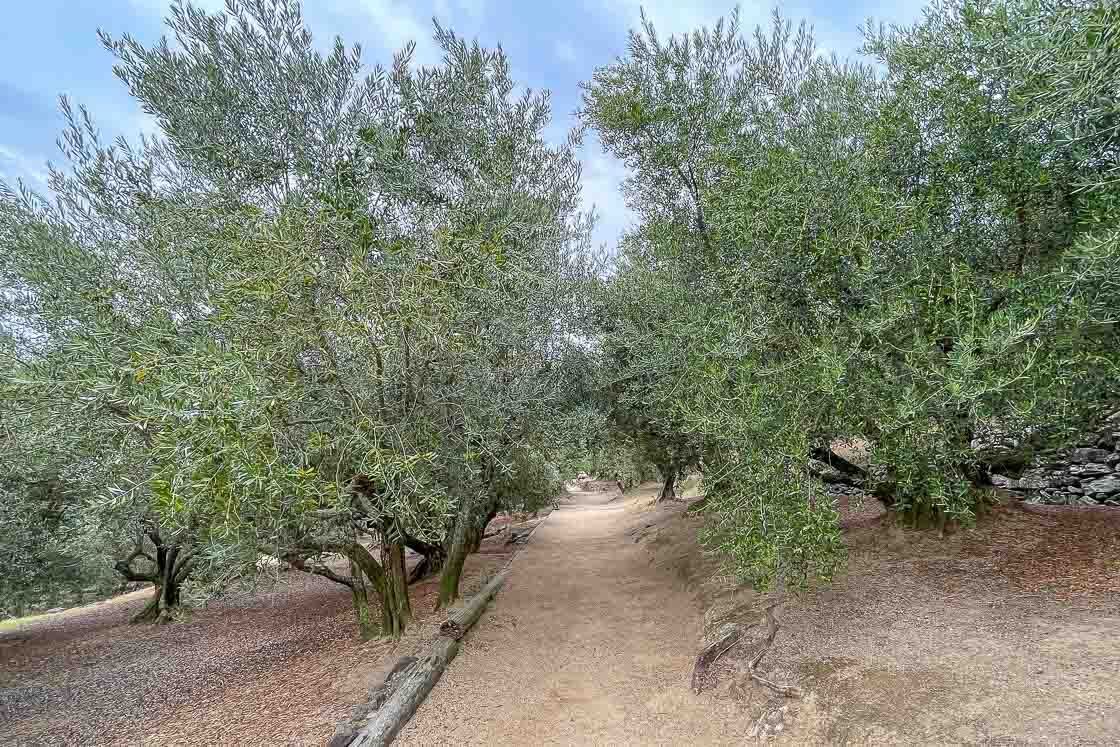
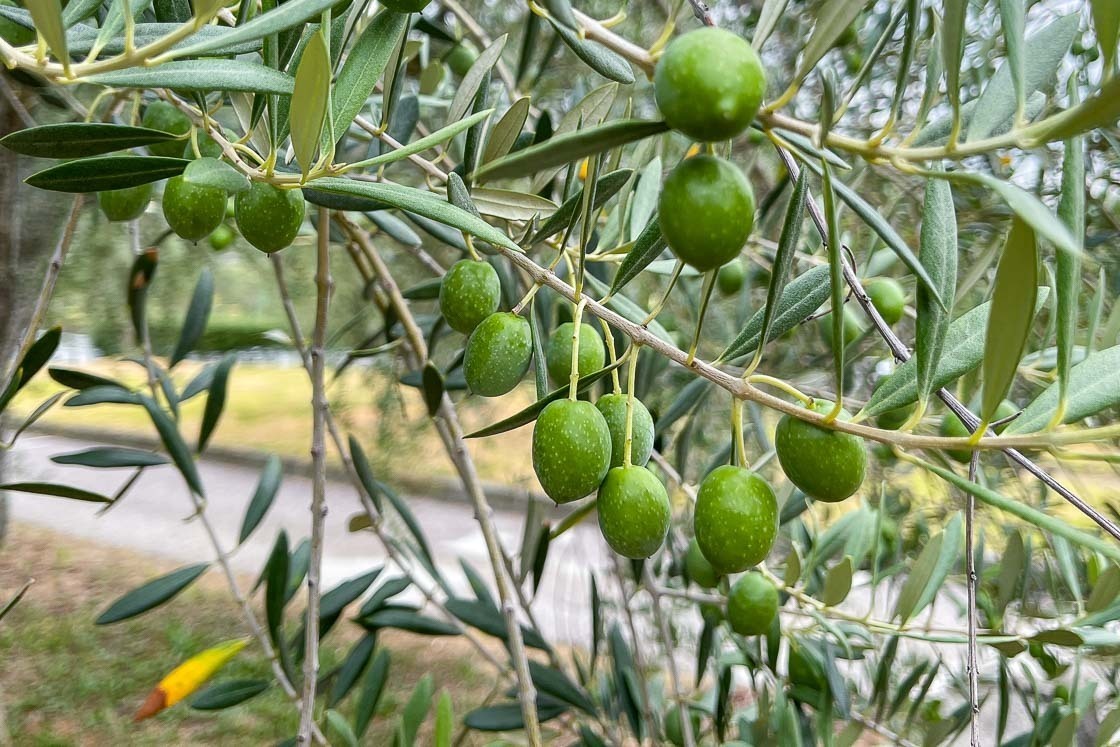
In keeping with the movie location theme - Himeji Castle and Engyoji Temple were filming locations for numerous Hollywood and Japanese movies and dramas - Olive Park was the filming location for the live action movie version of Kiki's Delivery Service. Visitors who want to pretend to fly over a seaside town like Kiki can borrow a free broom from the Olive Kinenkan by the main entrance of the park. Word of note: these free rental brooms are very popular, but are limited in number.
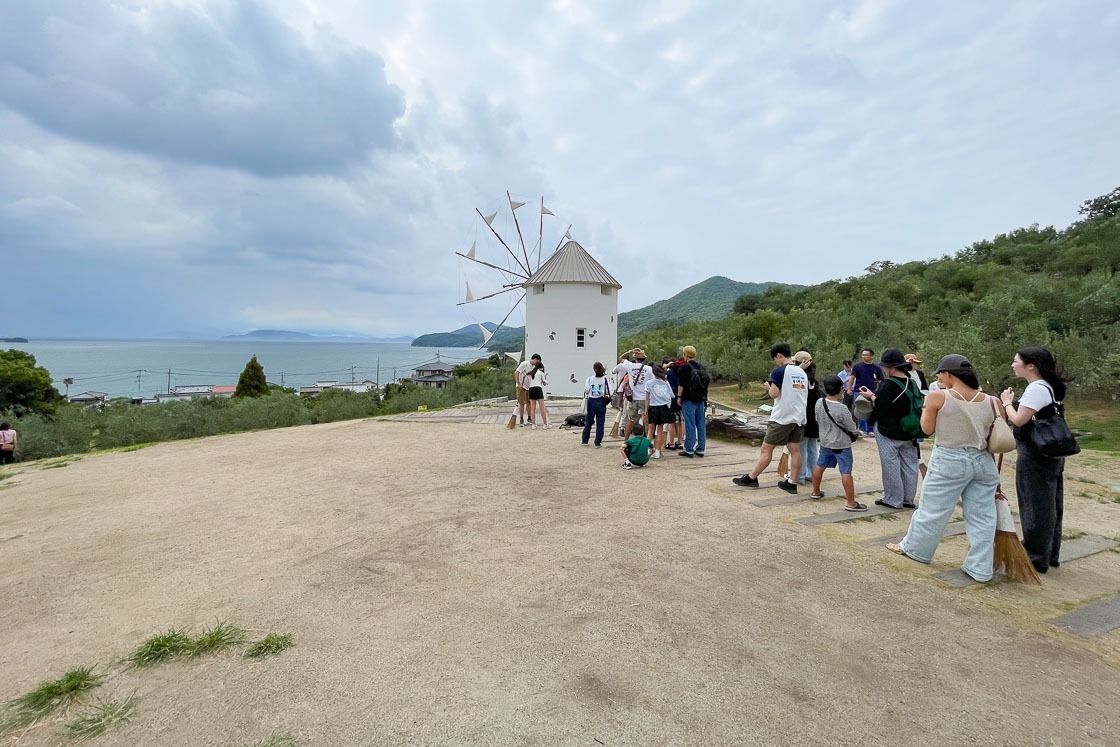
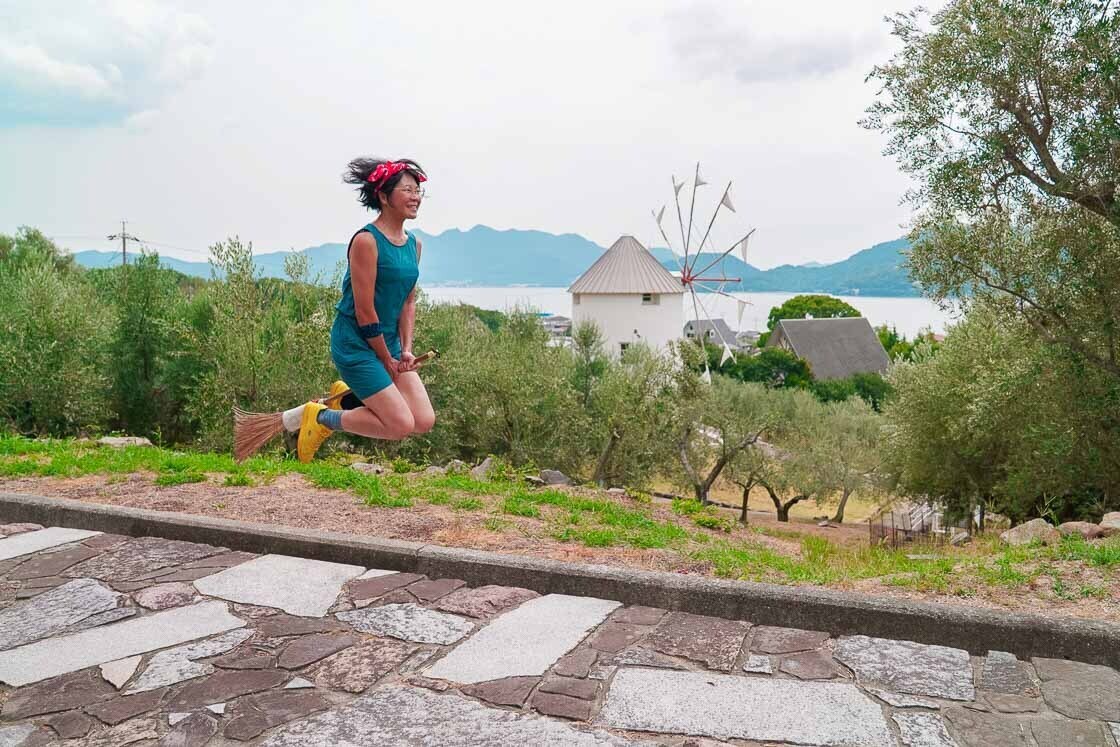
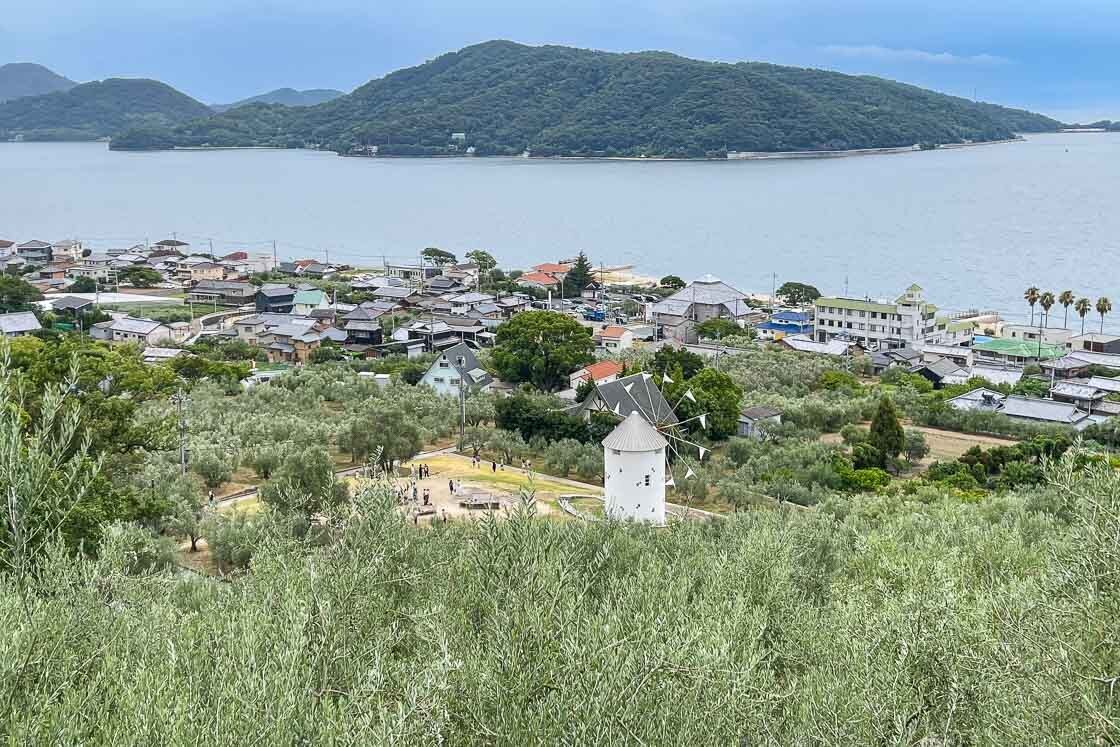
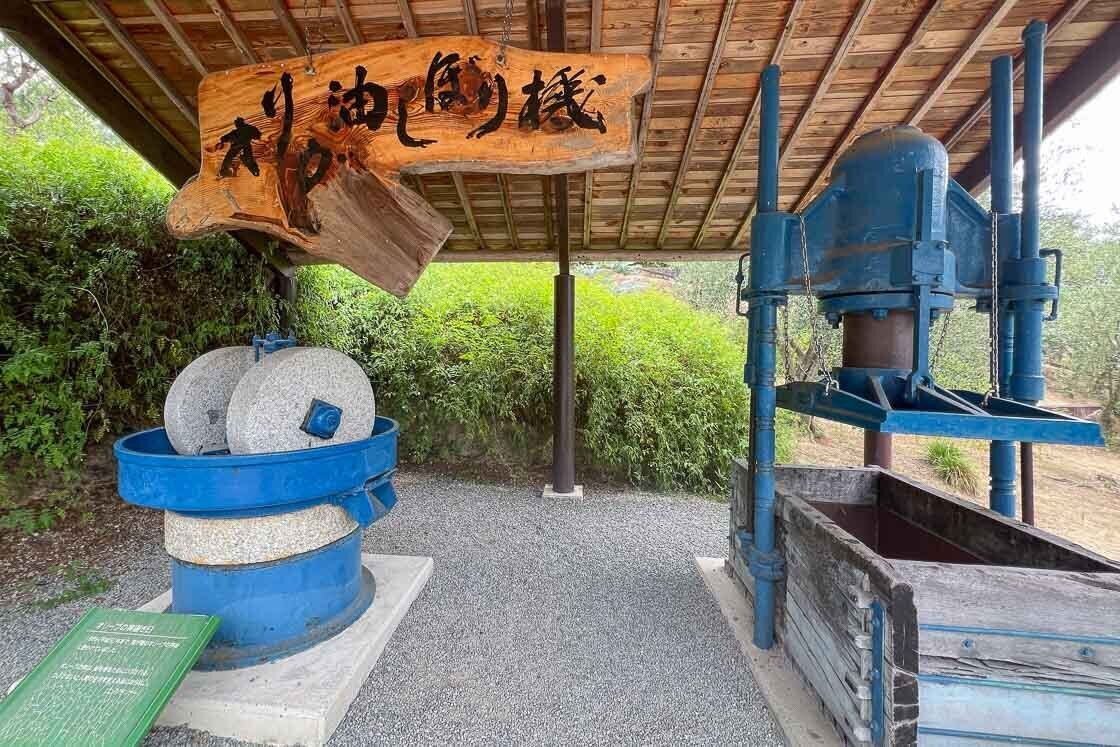
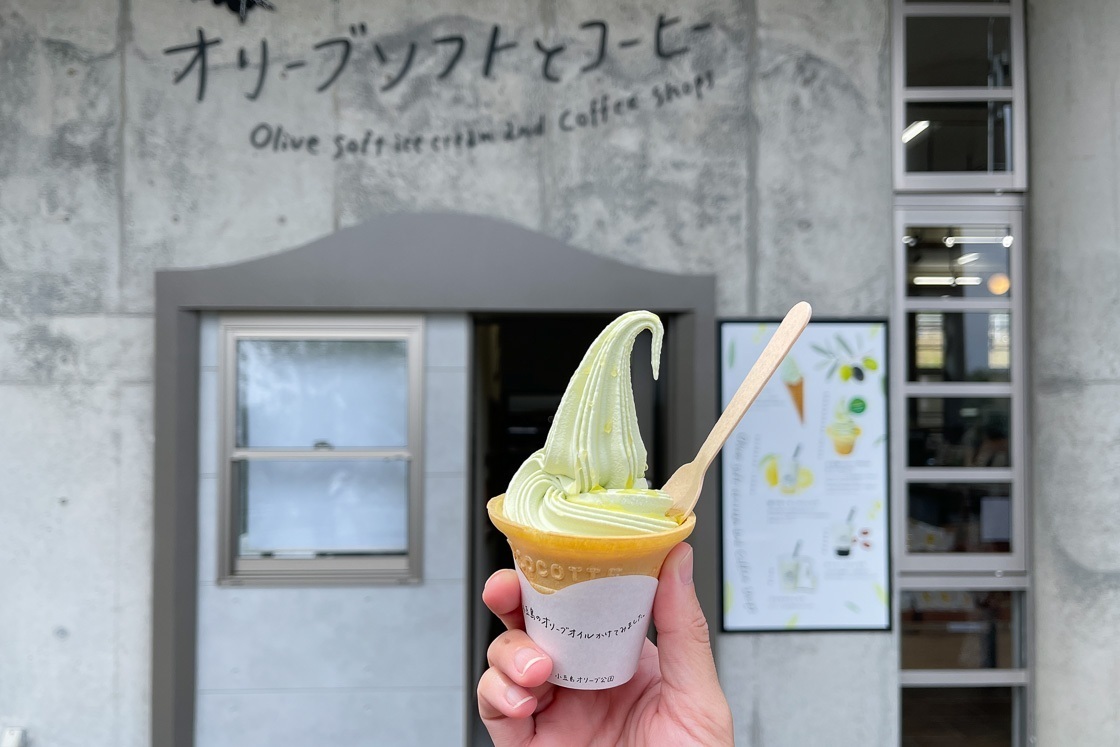
I continued my journey through Shodoshima, this time driving along the Kankakei Skyline, a ten kilometer scenic stretch of road that runs close to the ridgeline of the island's tallest peaks.
The purpose of my drive along the skyline was to see Kankakei Gorge, one of the three most unique rocky sceneries in Japan. The other two are Yabakei Valley in Oita and Mount Myogi in Gunma. The Kankakei ropeway takes visitors across a valley to the upper section of the gorge, but those with more time can follow trails that take them to different interesting rock formations. Even though I drove, the views looking down and over the gorge from the various lookout points were excellent and no less interesting.
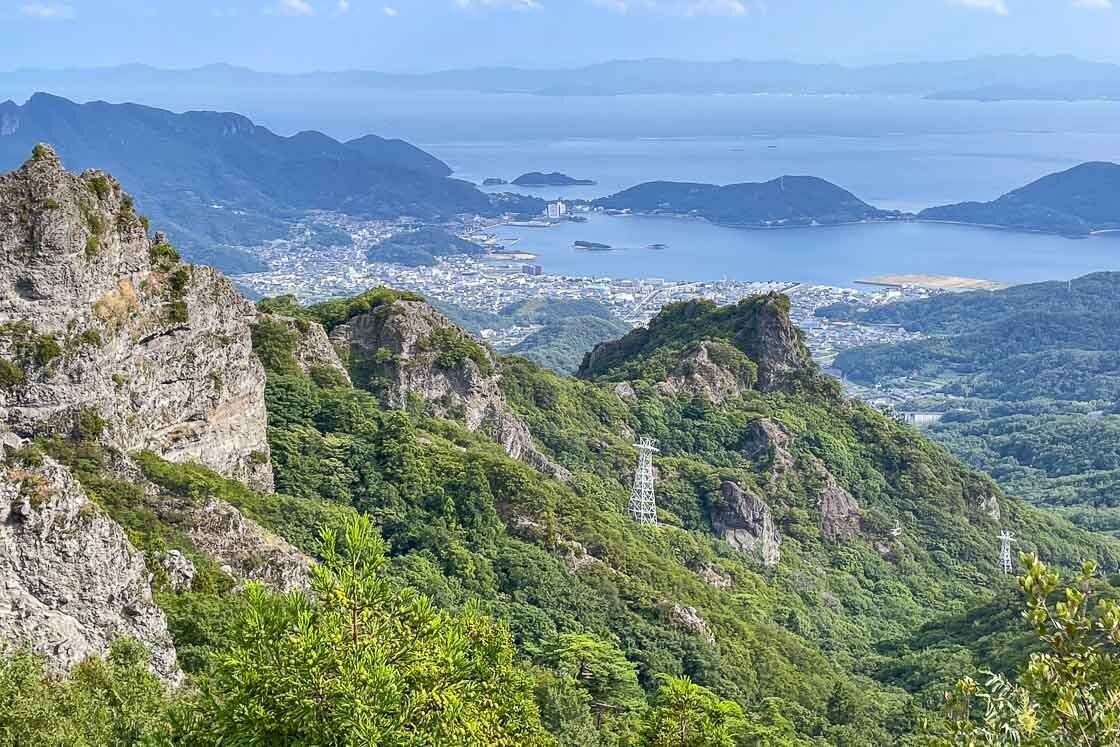
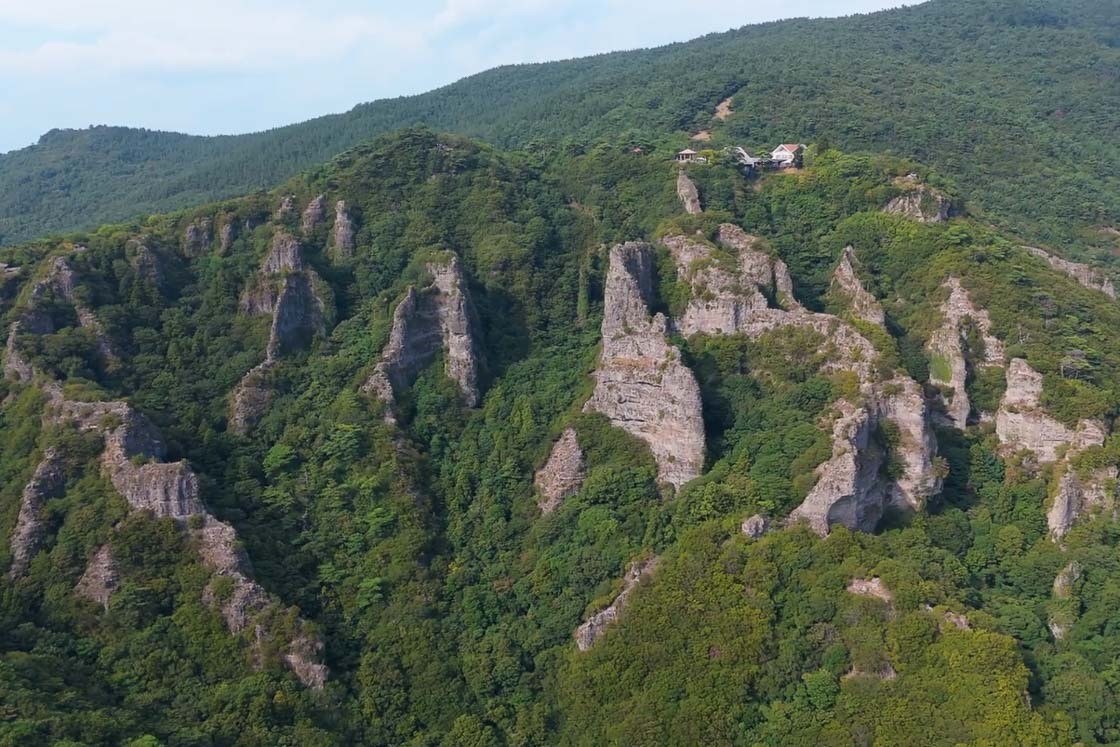
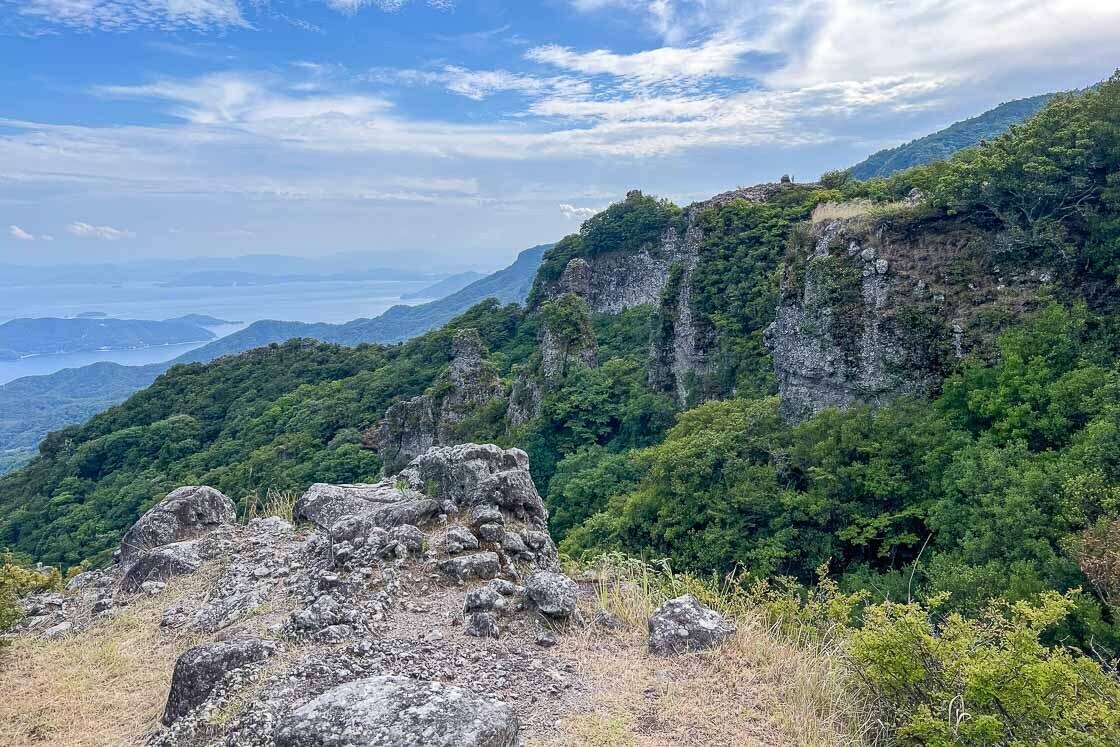
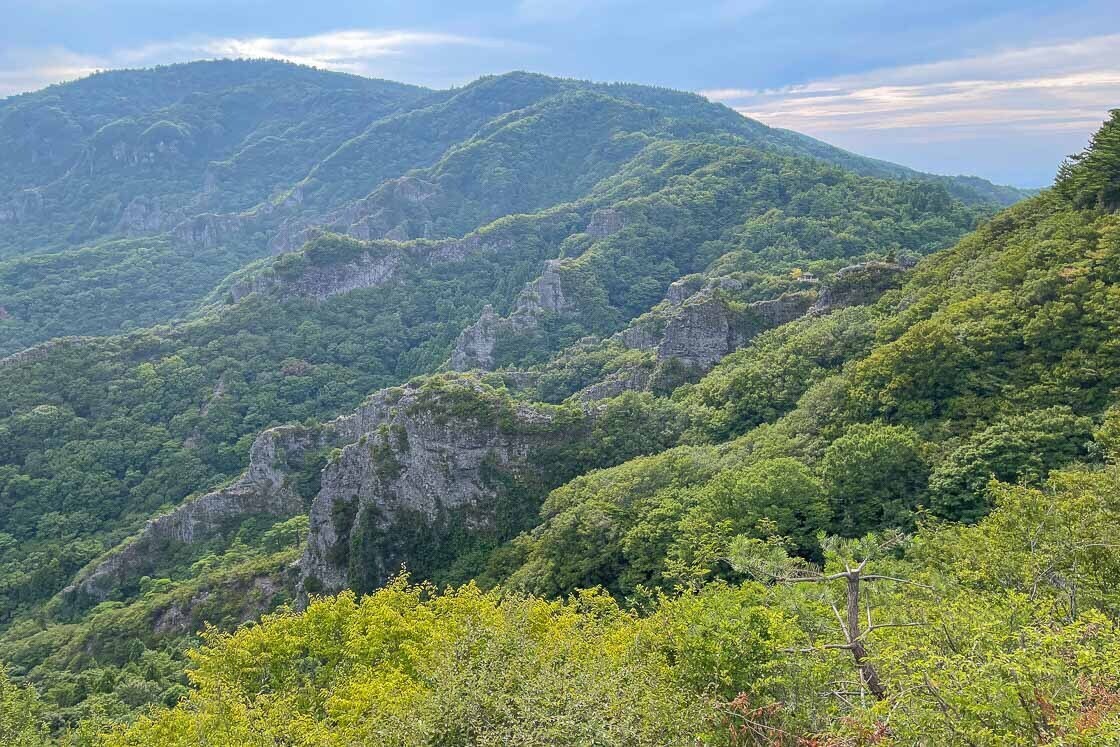
One thing that I have always thought, but have no scientific facts to back me up, is that sunsets on islands seem much nicer compared to the ones seen in the cities. Perhaps this is just a matter of a personal preference. Resort Hotel Olivean Shodoshima, my accommodation on Shodoshima, is one of the best places on the island to see the sun set, and I made my way there after I had my fill of the gorge.
Sunset can be enjoyed from a number of viewpoints on the hotel grounds including the rooms facing the water, but when the weather is good, sunset-limited drinks are provided at the hotel lounge to make the viewing experience a little more special.
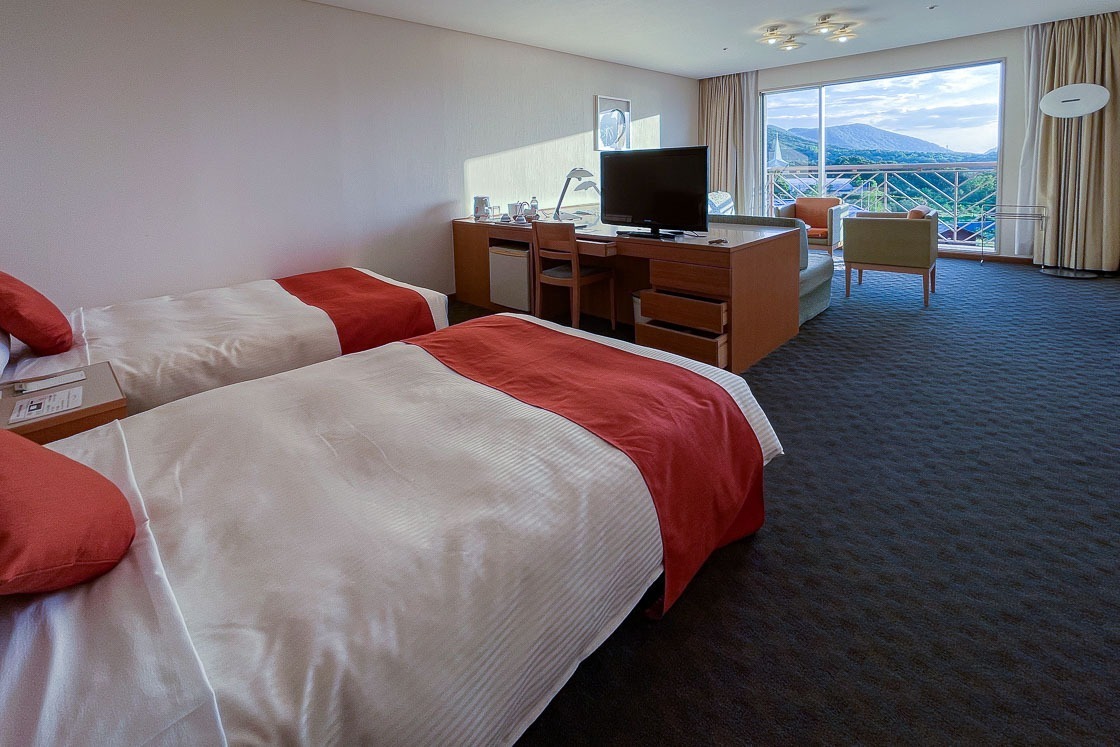
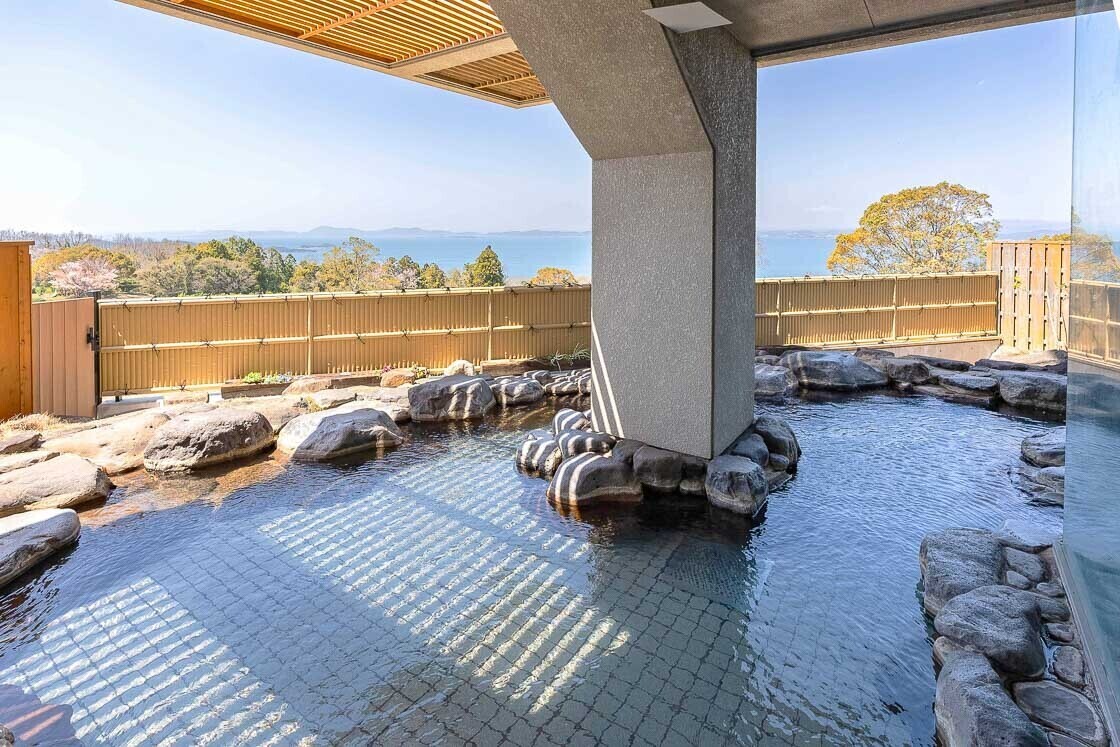
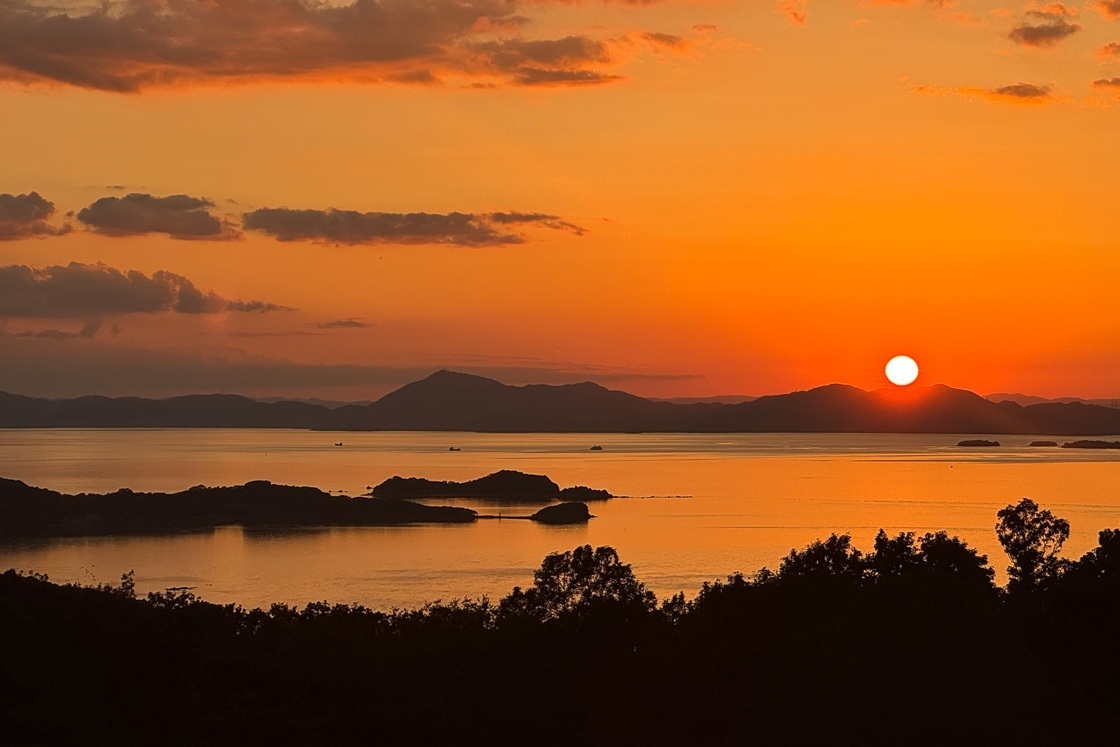
Day 3: Shodoshima and Ogijima
My last day of this trip started at the Nakayama Senmaida or the Nakayama Rice Terraces in the interior of Shodoshima, not too far from where I stayed the previous night. On the eastern end of the Kankakei Skyline that I drove on yesterday is Kankakei Gorge, and the western end is where the rice terraces are cut into the gentle slopes.
Approximately 800 rice fields of varying sizes are located there, and the whole area becomes an art site of sorts during the rice growing months from early May till early September. It is permitted to walk along the distinct walkways or raised banks between the terraces only. Additionally, visitors should also adhere to the rules, which include not stepping into the rice fields and remembering to close the gates to prevent wild animals from entering the terraces.
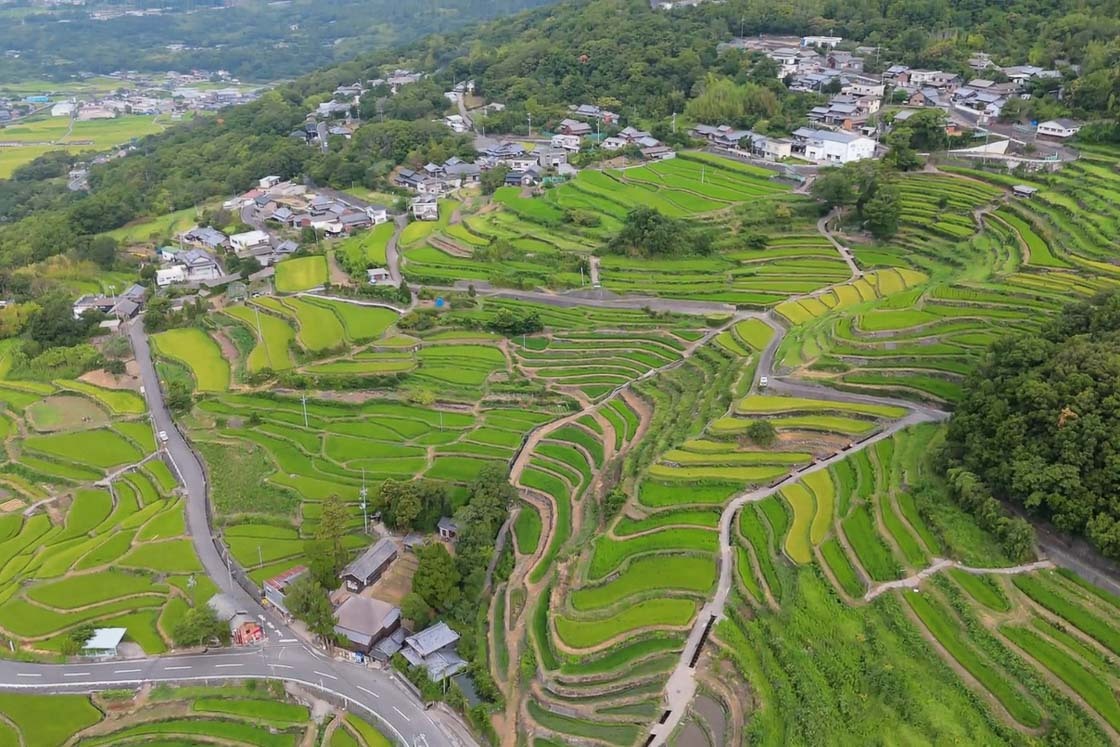
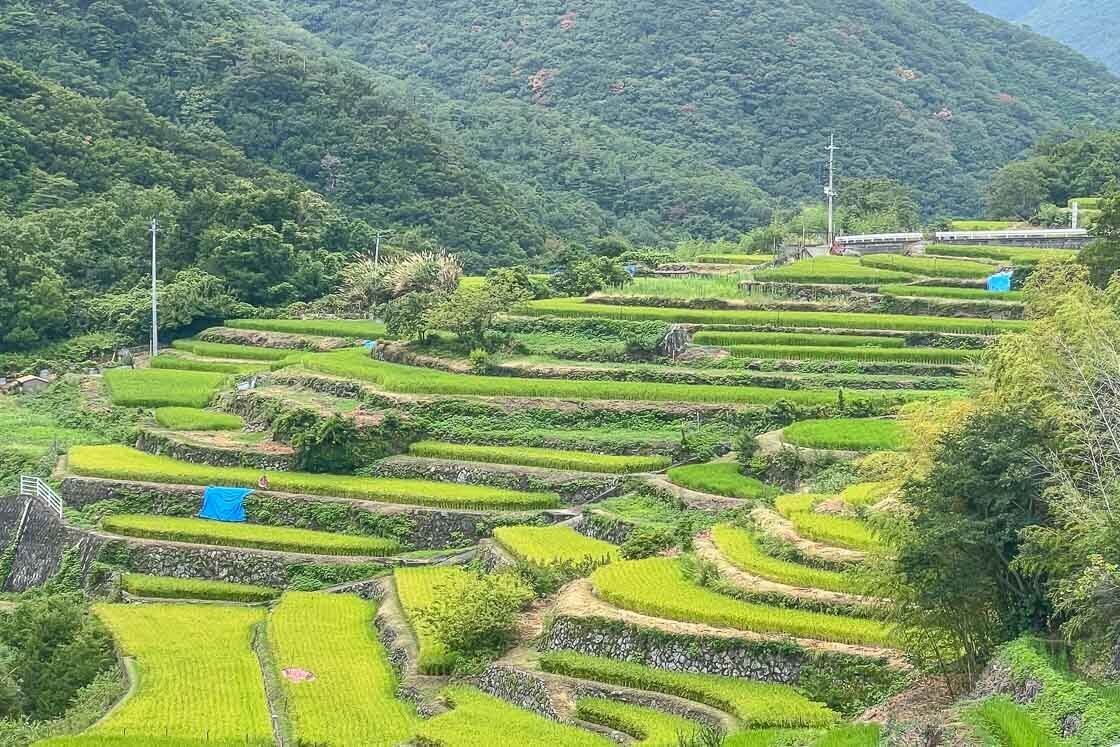
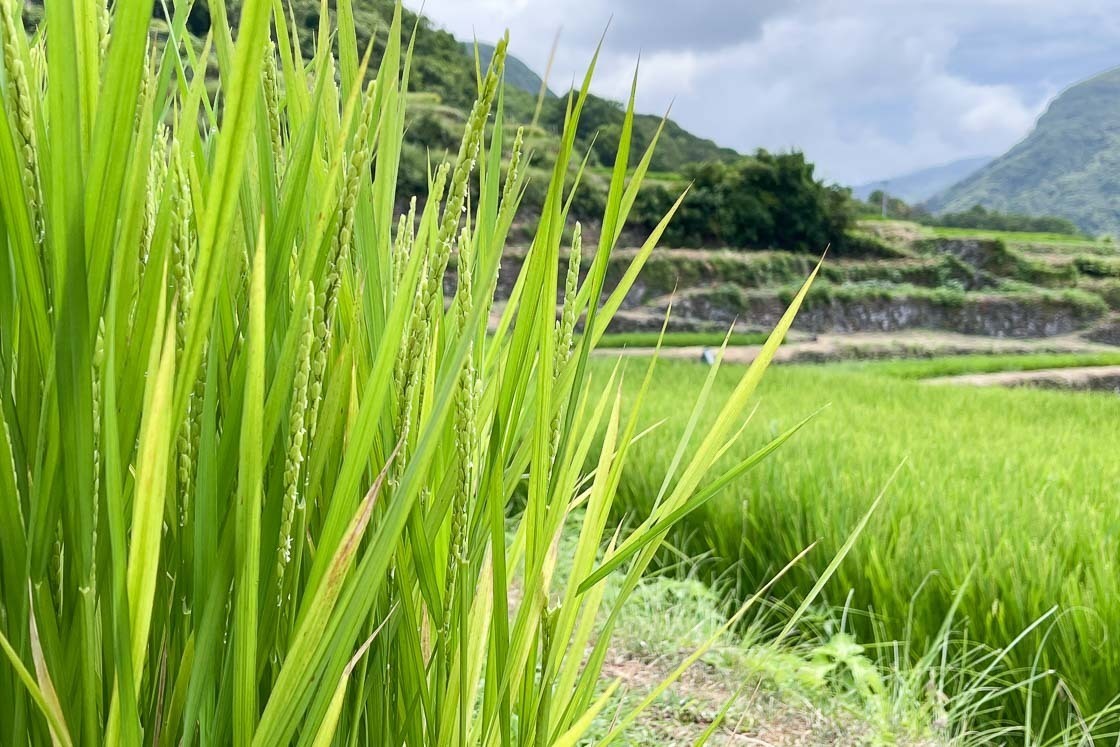
As I had some time before my ferry out of Shodoshima, I stopped by Angel Road, a sandbar that only appears at low tide, not far from the port. It is advisable to check the tide before going to avoid being stranded or disappointed. It was low tide when I was there, and I made the most of it by walking across the sandbar.
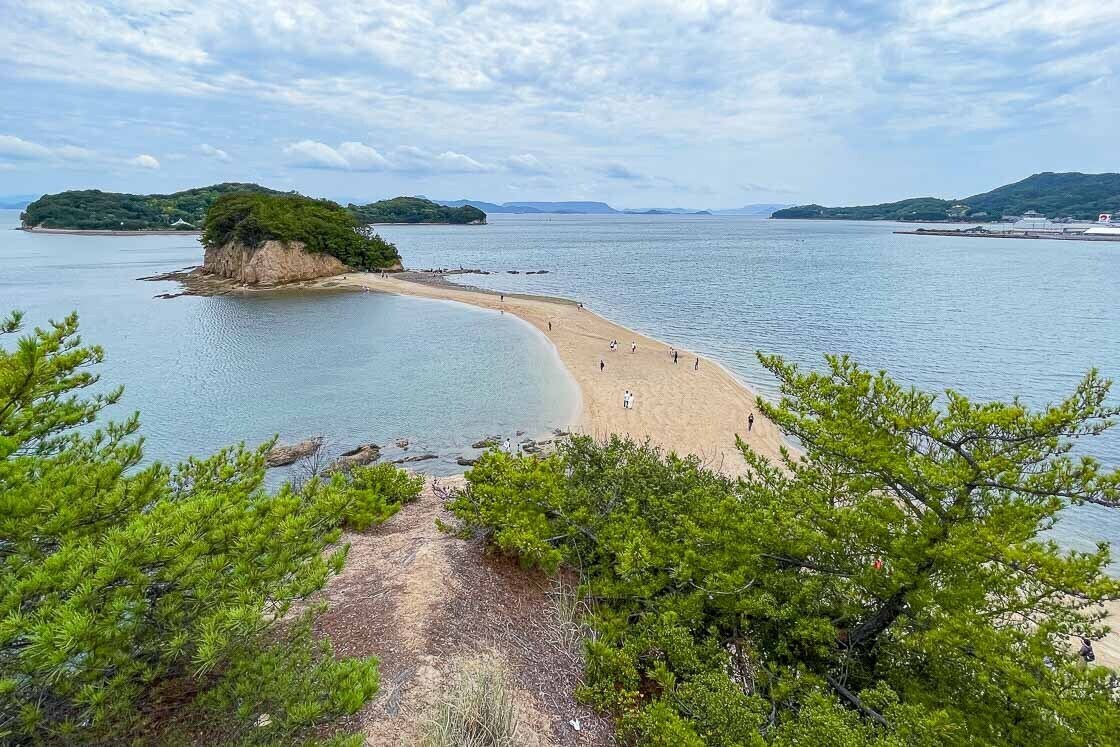
Then, it was time to head to Ogijima, the last destination for this trip, by ferry via Takamatsu Port. Previously only known to locals and those in the know, the quiet island has became more popular with tourists since it became one of the islands participating in the internationally renowned Setouchi Art Triennale. And for me, I have to thank the art festival for widening my Japan island repertoire. It is worth noting that even outside of the festival period, Ogijima is still nice to visit and can even be a nice break from people.
The largest draw on the island is its quaint village with its maze like streets that came into view as my ferry got closer to Ogijima. Soon after going ashore, I found out that like the terraced rice fields I saw in the morning, the houses in the village were built along the lower slopes of the hilly island, which explained the stacked houses view from afar.
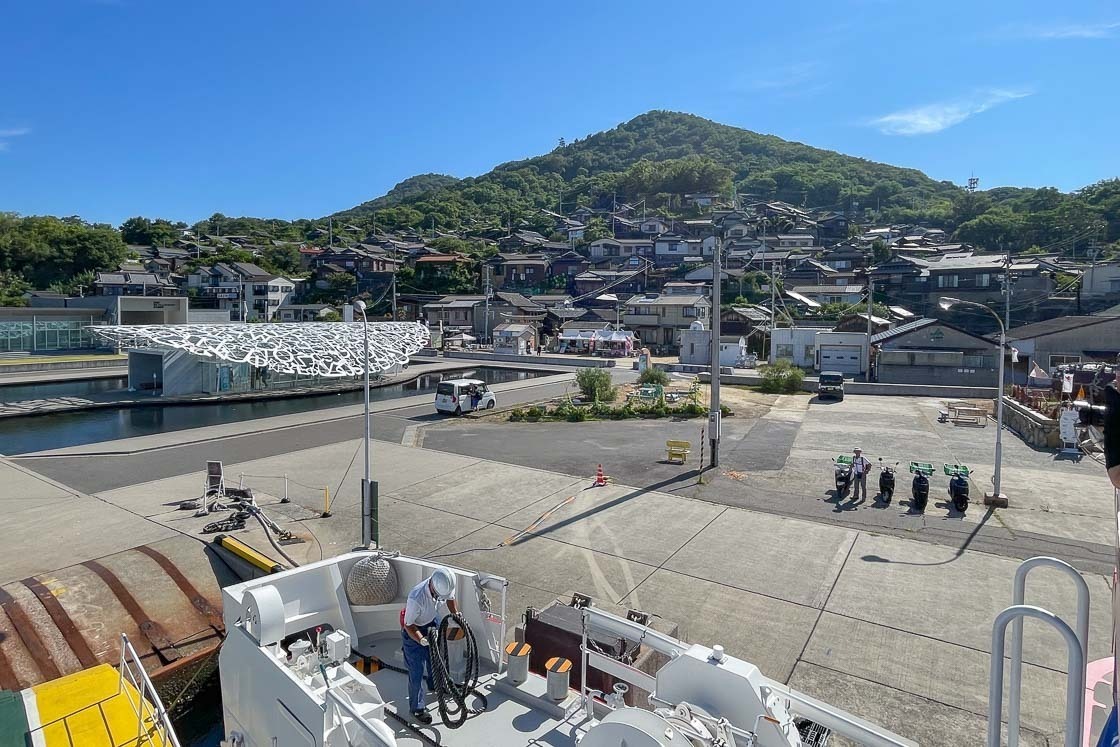
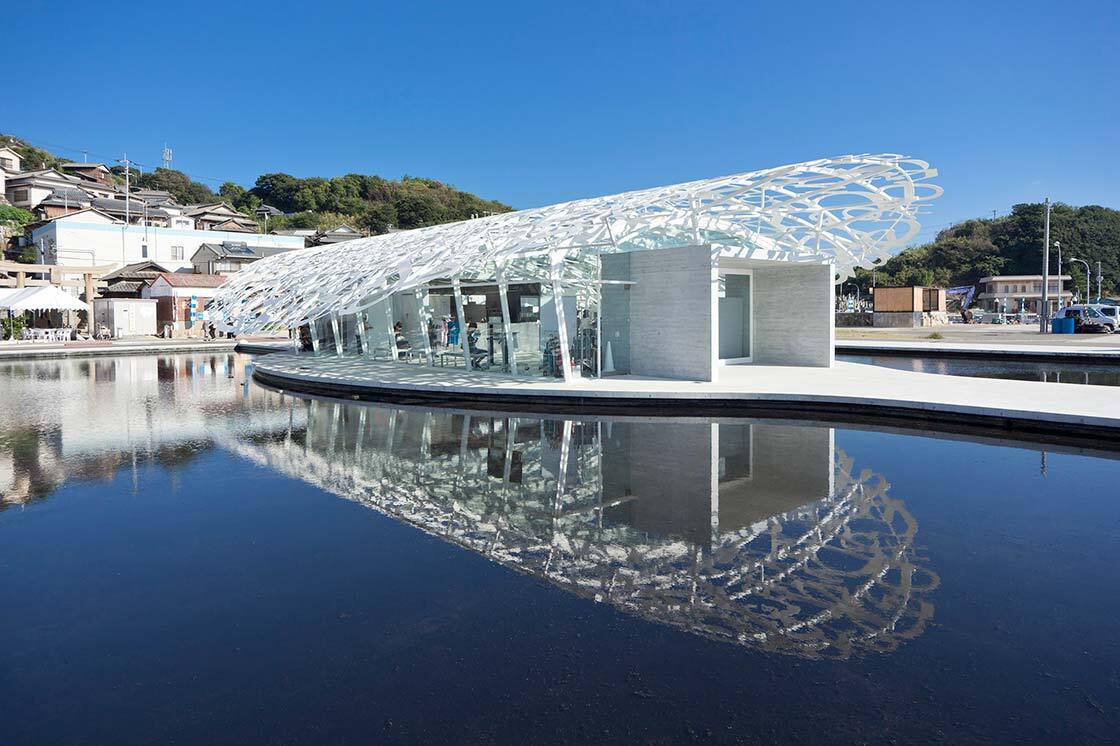
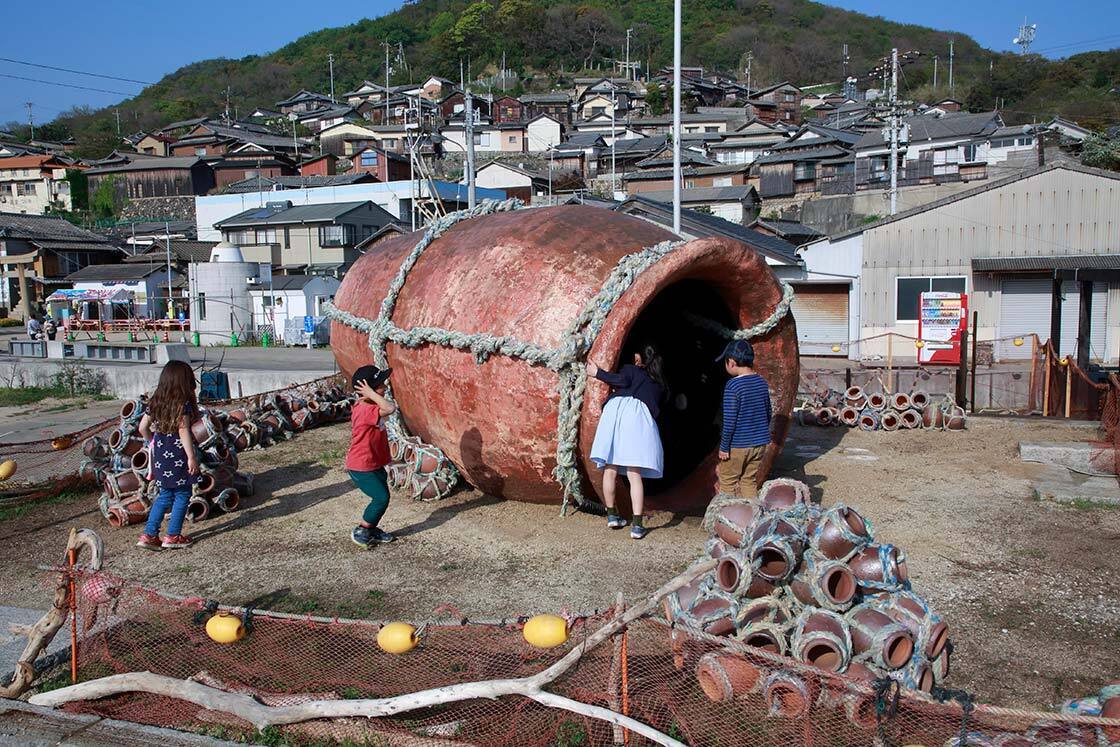
Ogijima is not particularly huge and can be easily explored in a few hours. Signs indicate the directions to the various permanent art installations on the island. It should be noted that people still live on the island, and the paths leading up to private homes are clearly marked with no entry signs.
In total, I spent about four hours on the island, due in part to the ferry schedule of one ferry every two hours. This gave me enough time to walk around the island, even to the lighthouse at the northern tip and stop at a cafe for a break.
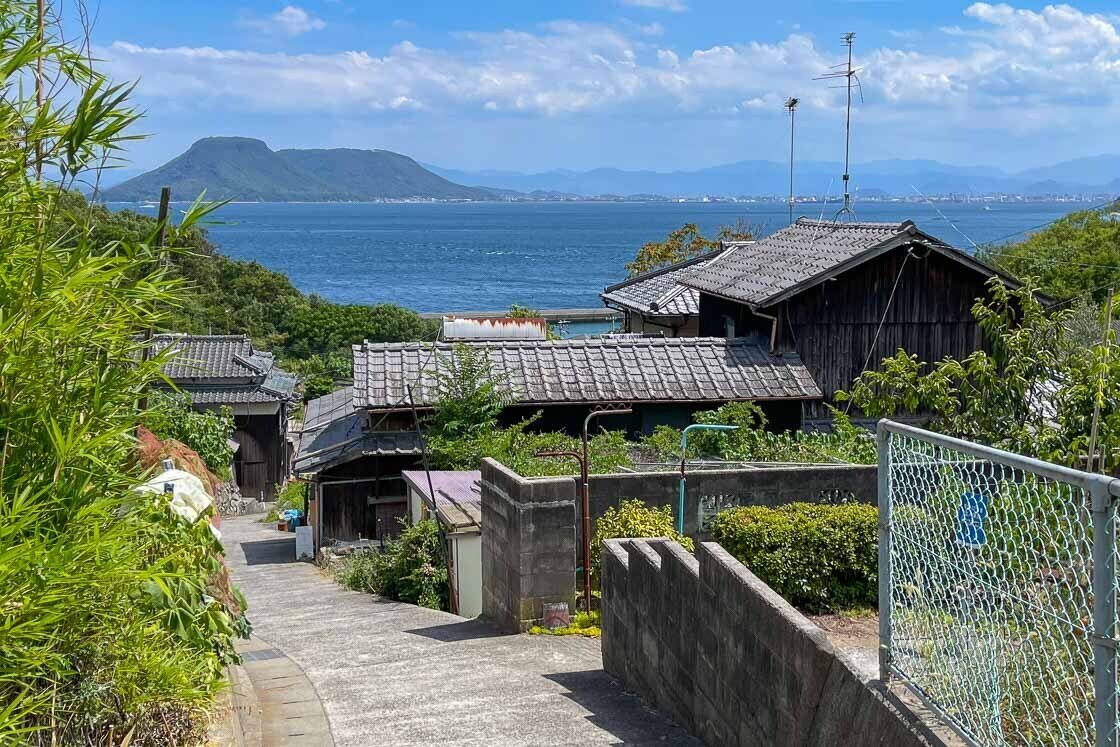
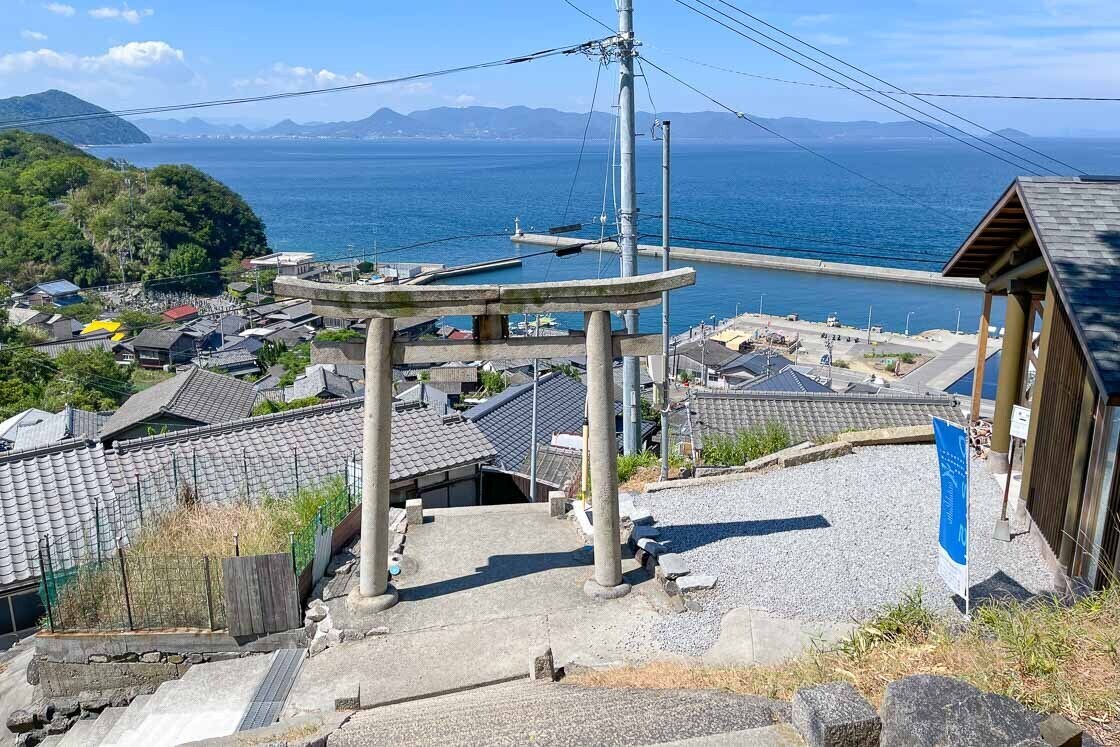
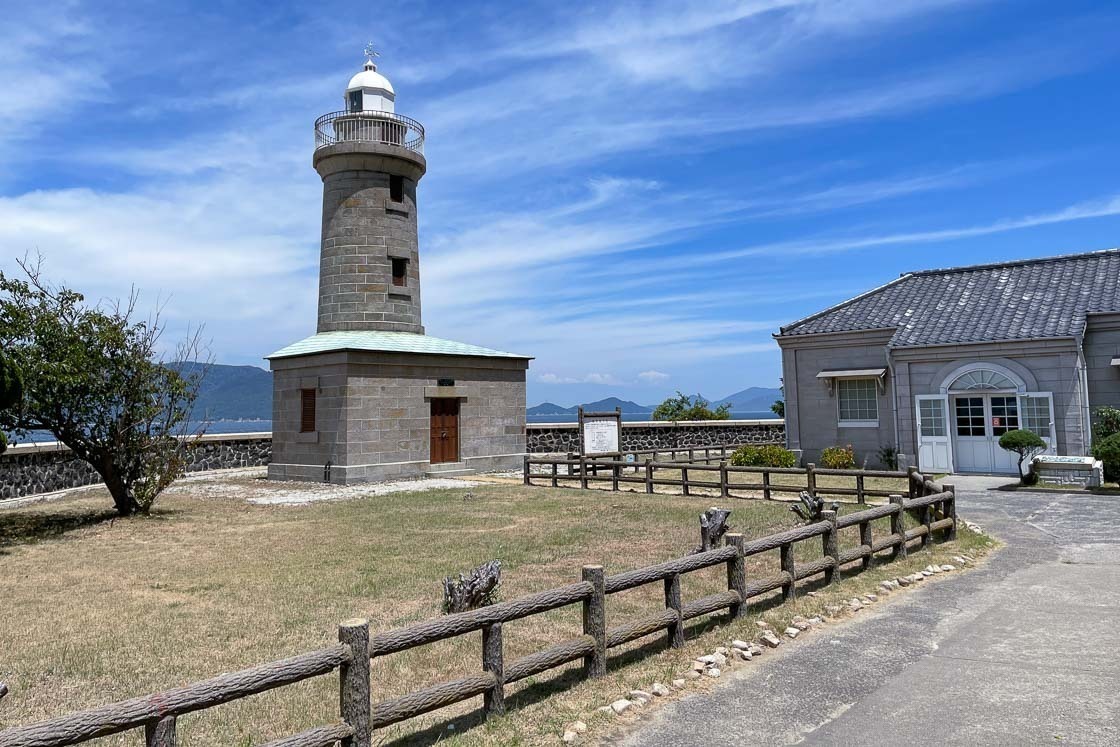
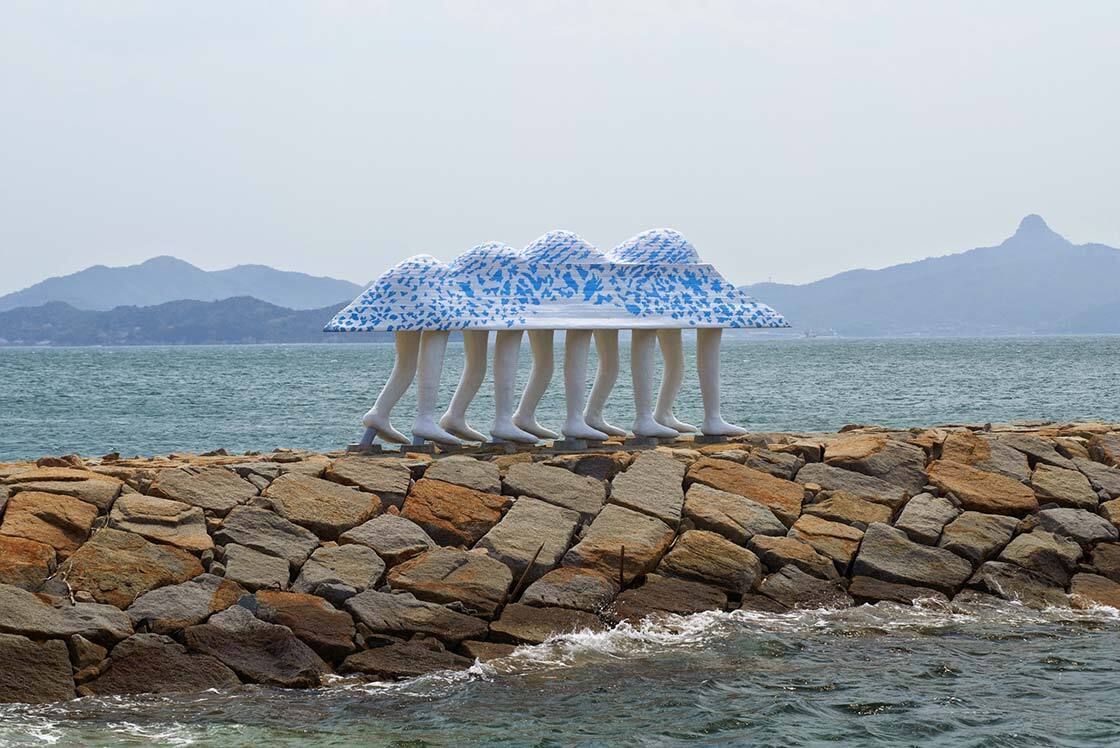
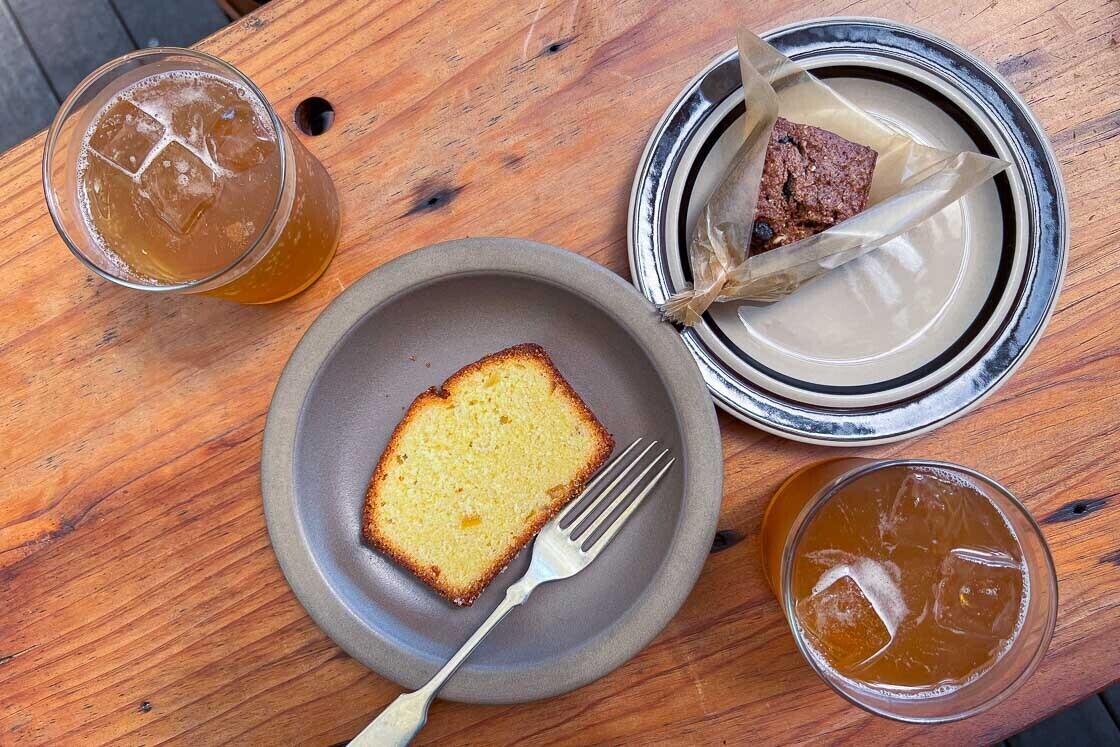
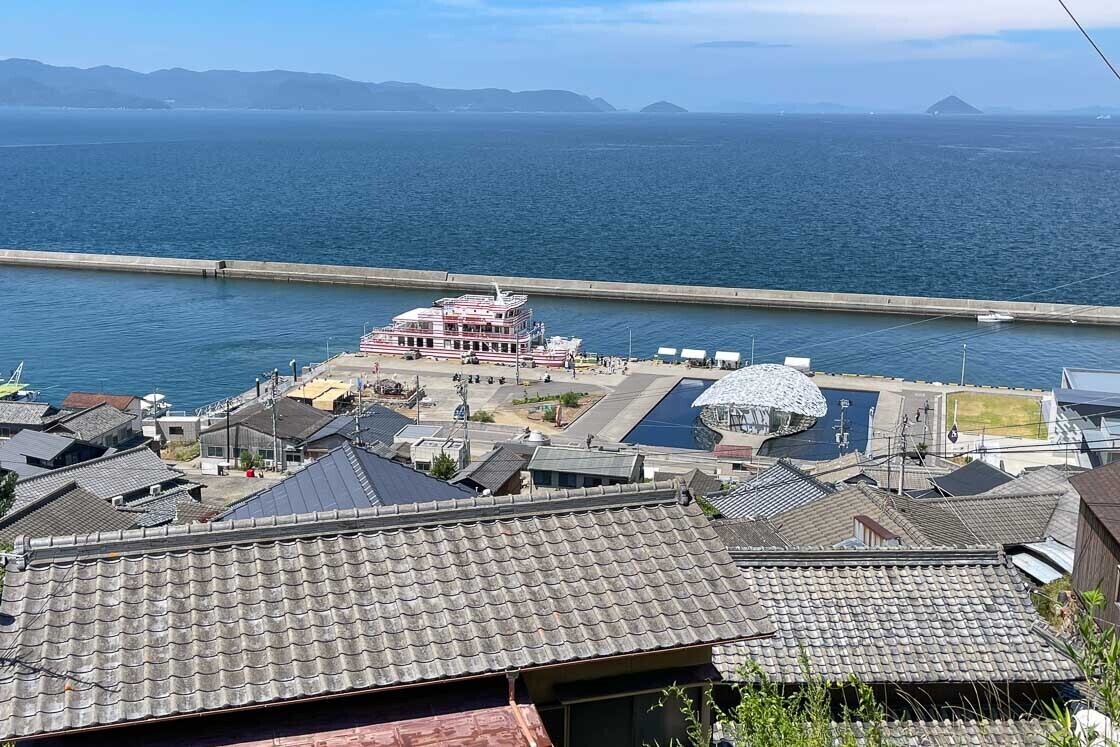
Back on the ferry to Takamatsu Port, I thought about my three fulfilling and satisfying days. I visited three spots that were movie filming locations, and they were indeed beautiful and movie worthy. Then I visited two islands (double yay from me as a train-ferry-rock-island lover), both of which had different vibes, styles and personalities. I also managed to take a variety of transportation: bullet train, local bus, ropeway, ferry, rental car and my own two legs, which is quite a feat considering this was just over three days!
All in all, I had yet another great trip in the Setouchi Region, and I am already looking forward to my next visit.
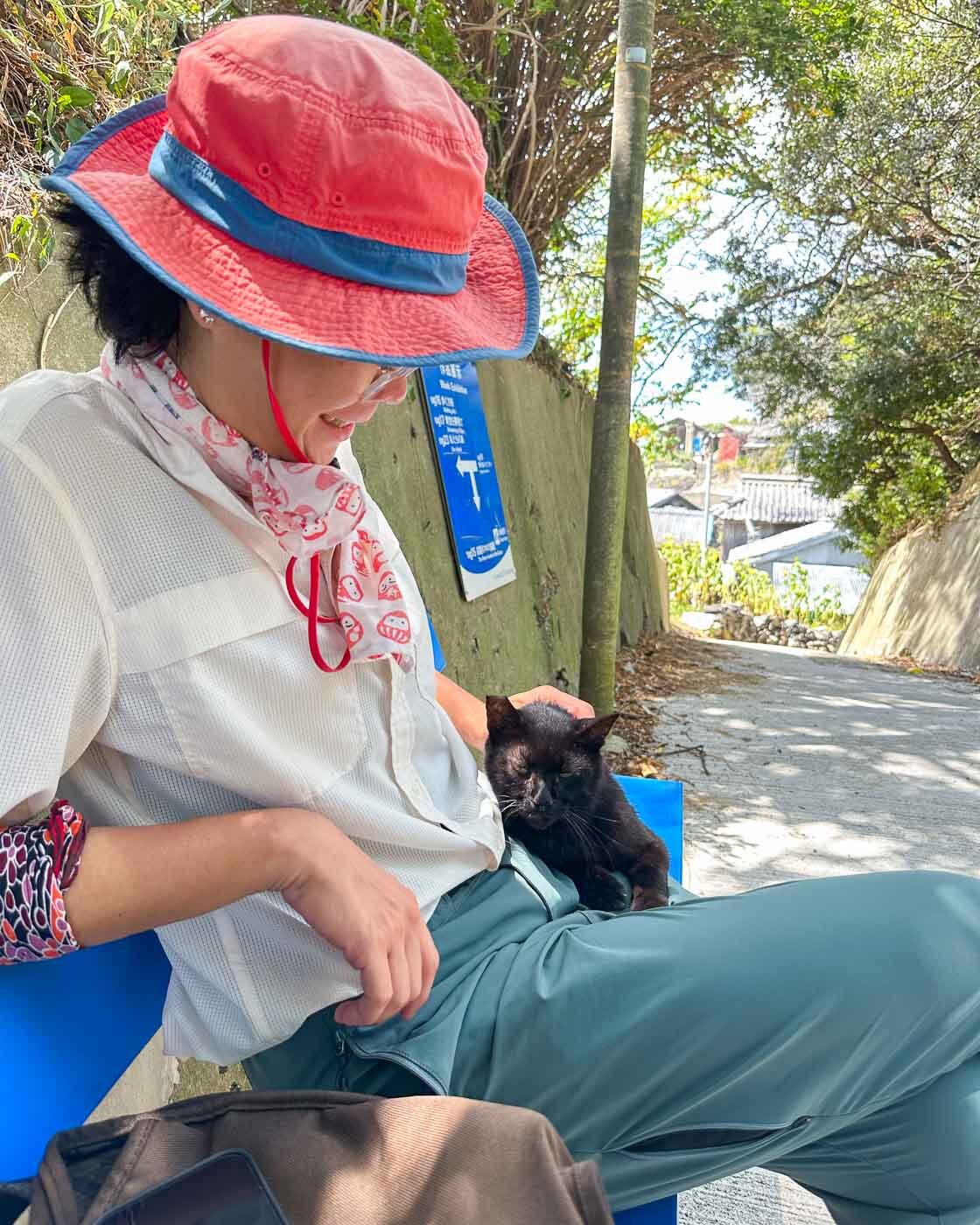
Access
A combination of bullet trains, local buses and ferries were used on this trip. While it is possible to buy tickets as you travel, one rail pass worth considering is the Setouchi Area Pass, a convenient alternative that covers all the bullet train rides, local buses and ferries (except the one to/from Ogijima) in this itinerary. The pass costs 22,000 yen and is valid for 7 consecutive calendar days. Note that this 3-day trip alone does not justify a 7-day pass, so consider adding cities like Hiroshima or Fukuoka or Matsuyama to the remaining four days. See more details about the rail pass on our dedicated Setouchi Area Pass page. All information is accurate as of October 2025.
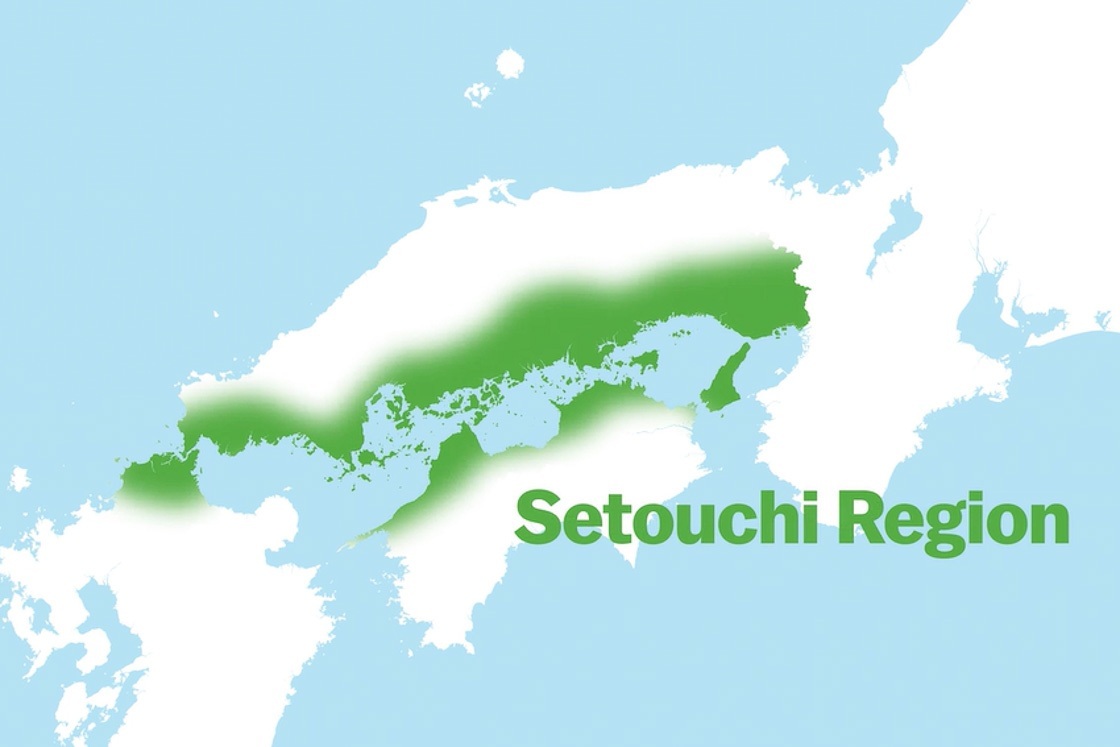
Getting to and around Himeji
From Shin-Osaka Station, take the Sanyo Shinkansen and get off at Himeji Station (about 30 minutes 2-4 trains/hour).
Himeji Castle is an approximately 20 minute walk from the station.
To get to Shoshazan Engyoji, take bus number 10 that is bound for Shoshazan Ropeway (書写山ロープウェイ) from Himeji Castle (姫路城大手門前, Himejijo Otemon-mae). Get off at the last stop (25 minutes one way), and walk a few steps to the ropeway station. The one way journey from the lower ropeway station to the upper station takes about four minutes, and there are 4 departures per hour.
To return to Himeji Station, take the same bus number 10 all the way to the station. The one way journey takes about 30 minutes.
Himeji and Okayama are connected by the Sanyo Shinkansen, and the one way journey takes about 20 minutes.
Getting to and around Shodoshima
From Okayama Station, take a bus bound for Shin-Okayama Port and get off at the terminus (one bus/hour, 40 minutes one way). Car ferries operate between Shin-Okayama Port and Tonosho Port on Shodoshima every 1-2 hours (70 minutes one way).
Shodoshima is too large to be covered on foot or by bicycle. The public bus network is efficient and inexpensive, and suitable for those with more time on their hands. Consequently, a rental car is recommended for convenience and time efficiency. There are some rental car outlets around Tonosho Port.
Approximate driving times in Shodoshima:
- Tonosho Port to Olive Park: 20 minutes
- Olive Park to Kankakei Gorge: 40 minutes, excluding stops along some viewpoints
- Kankakei Gorge to Resort Hotel Olivean Shodoshima: 20 minutes
- Resort Hotel Olivean Shodoshima to Nakayama rice terraces: 15 minutes
- Nakayama rice terraces to Angel Road: 15 minutes
- Angel Road to Tonosho Port: 5 minutes
Getting to and around Ogijima
Car ferries (60 minutes one way) and high speed ferries (35 minutes one way) operate between Shodoshima and Takamatsu. For this trip, I took the hourly car ferry from Tonosho Port.
Takamatsu Port in Takamatsu is used by both Shodoshima and Ogijima ferries. Their respective boarding area is a few steps away from one another.
Ogijima is 40 minutes by ferry (one departure every 2 hours) from Takamatsu Port. The island can be comfortably covered on foot in a few hours, and good walking shoes are advisable.
Official website
- Setouchi Area Pass - Official website
- Setouchi, your next destination - Itinerary suggestions on Tripadvisor
